

Bolivia Travel Guide
Looking for an in-depth Bolivia travel guide ?
Then you’re in the right place!
One of the more underrated gems of Latin America, Bolivia is a vibrant country full of incredible sights, friendly people and unique culture.
From breathtaking salt flats to lush jungles to exciting cities, there’s something for every kind of traveler in Bolivia. And if you’re looking to visit some record-breaking places, this is the country to visit.
Bolivia is home to the tallest monument to Jesus Christ on Earth, the world’s largest navigable lake, the largest population of Indigenous peoples, and much more.
With so many fascinating experiences, you’ll be bragging about your trip to your friends and family for weeks after you return.
Bolivia’s diverse landscape makes it the perfect destination for outdoor adventurers . From the Andes Mountains to the Amazon, there’s a lot to explore in this landlocked country.
Madidi National Park is the best place in the country to experience the mighty Amazon River, whether you’re hiking through the rainforest or checking out the local wildlife. Be sure to build in extra time to reach the park, though, as rides on public transport from major cities can take several hours, especially in the wet season.
Up in the highlands, you’ll find incredible mountain views at Lake Titicaca, a top spot for international travel. This giant lake is home to sights and experiences you won’t soon forget.
Wherever you decide to go, read up on travel health before your trip. Altitude sickness can take its toll here, so make sure you’re prepared for whatever adventure you have planned.
Not much of an outdoorsy type? Bolivia’s cities have tons to offer travelers.
Santa Cruz, located in southern central Bolivia, is considered the country’s commercial center and has tons of great museums, galleries, and cultural institutions to visit — as well as a vibrant nightlife scene.
In La Paz, you can browse the colorful markets and learn more about the Indigenous Incan culture that has endured in the area for centuries.
And in Sucre, you can see real dinosaur footprints and chow down on authentic empanadas all in the same day (a perfect itinerary if you ask us).
Ready to travel Bolivia?
Keep reading to dive into resources that will help you with planning a trip to Bolivia in South America.
Note: This ultimate guide to Bolivia travel contains affiliate links to trusted partners!

Bolivia Map
Use this Bolivia travel map to begin planning your trip to this incredible country!
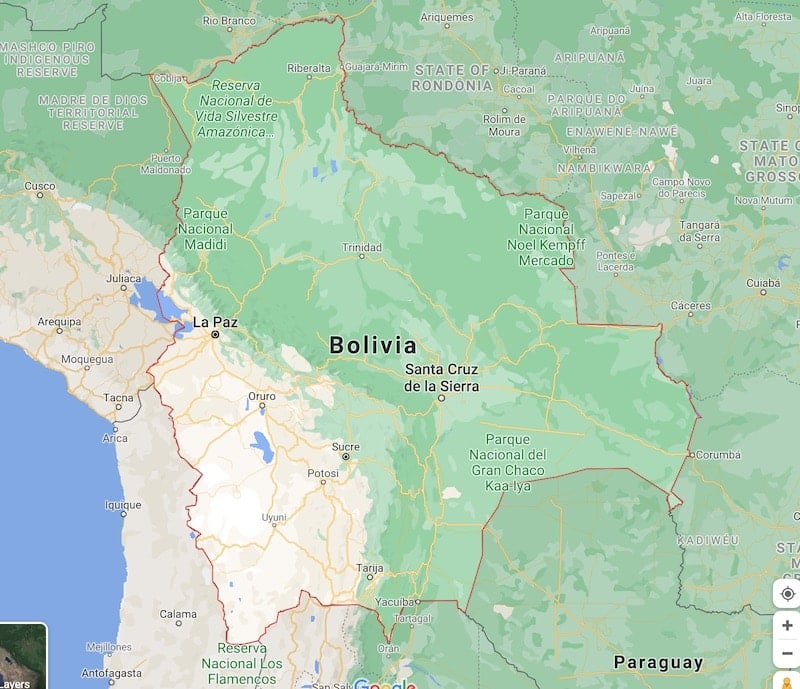
Click here for an interactive Google Map version of the above graphic.
Bolivia Salt Flats Experiences
Looking to travel to the Bolivia Salt Flats (ie Salar de Uyuni)? These guides can help!
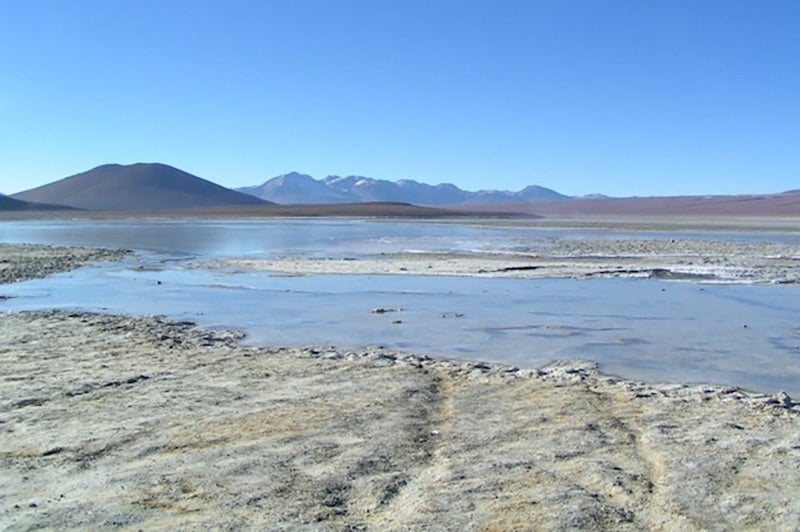
Touring Bolivia’s Salt Flats: A Memorable Experience
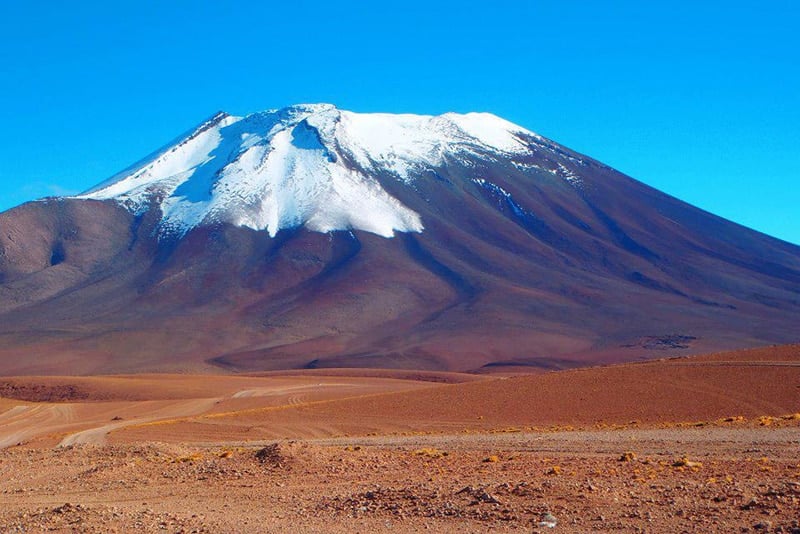
Awkward Moments In Bolivia’s Siloli Desert
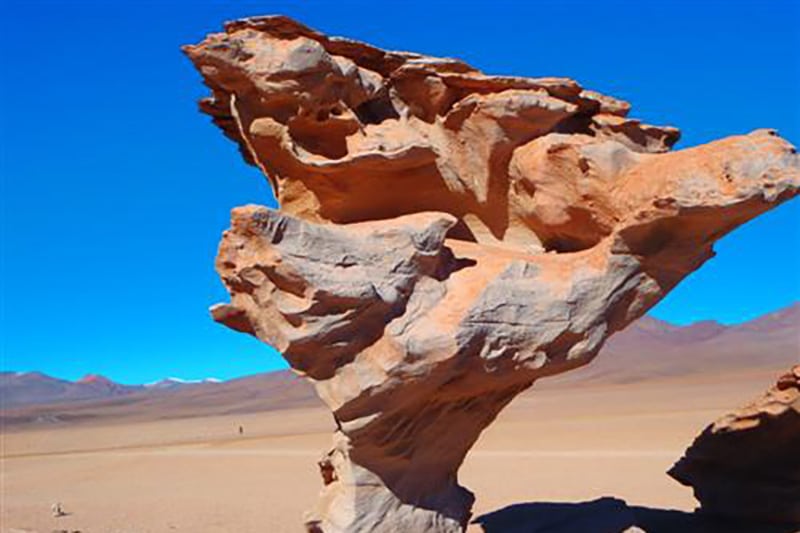
The Lesser-Known Sites Of Salar de Uyuni In Bolivia
La Paz Travel Guide
La Paz is a must-stop when traveling in Bolivia !
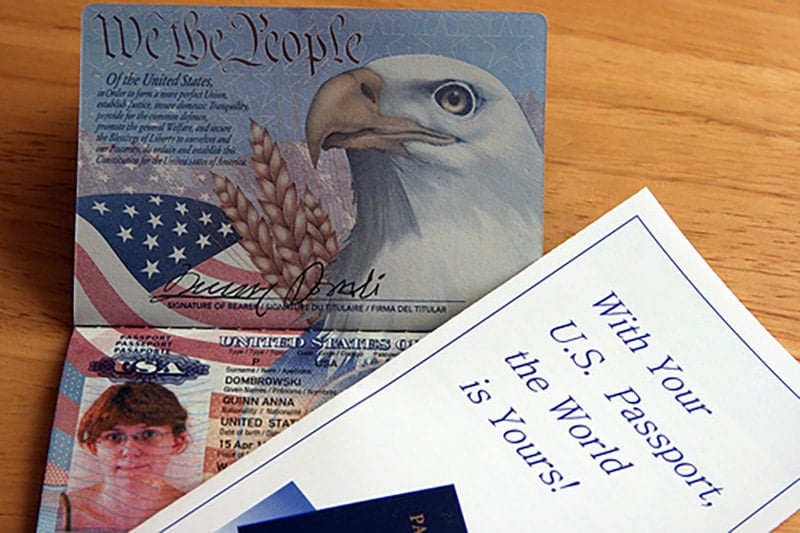
My Humorously Painful Story About Obtaining A Visa In La Paz, Bolivia
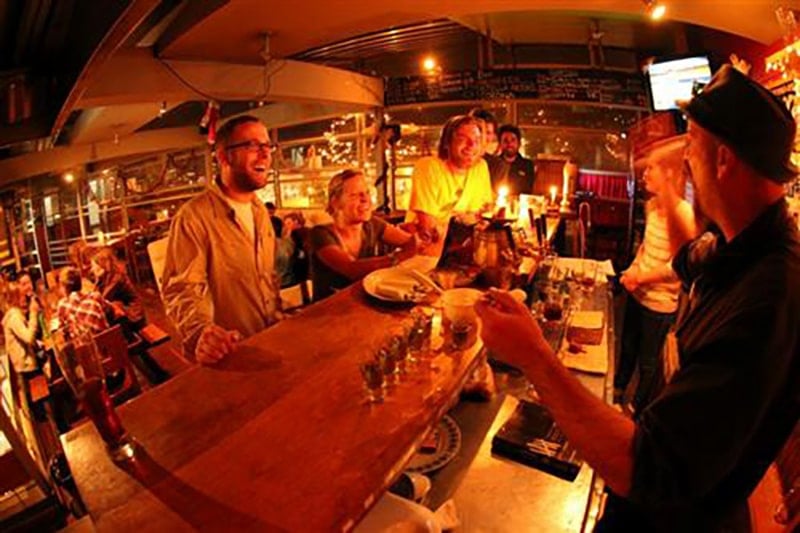
Hostel Review: The Adventure Brew B&B In La Paz, Bolivia
Bolivia Travel Tips
This advice can help you with planning a trip to Bolivia !
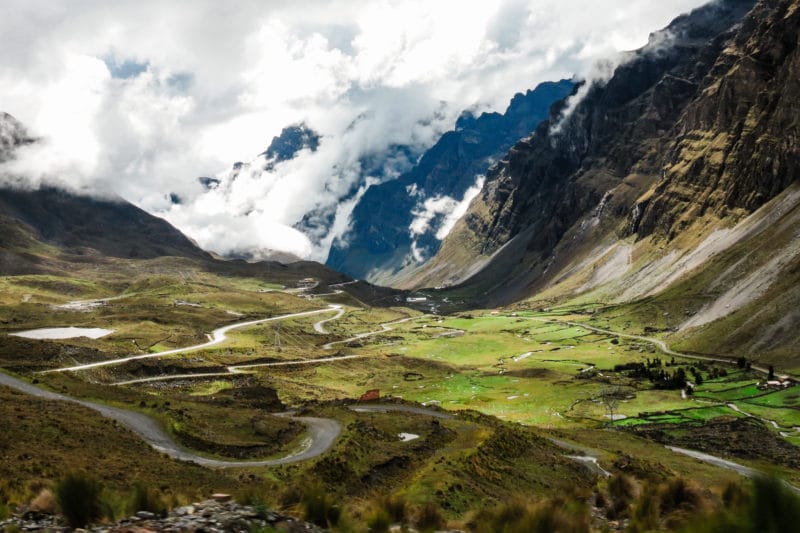
Why Bolivia Should Be Your Next Travel Destination
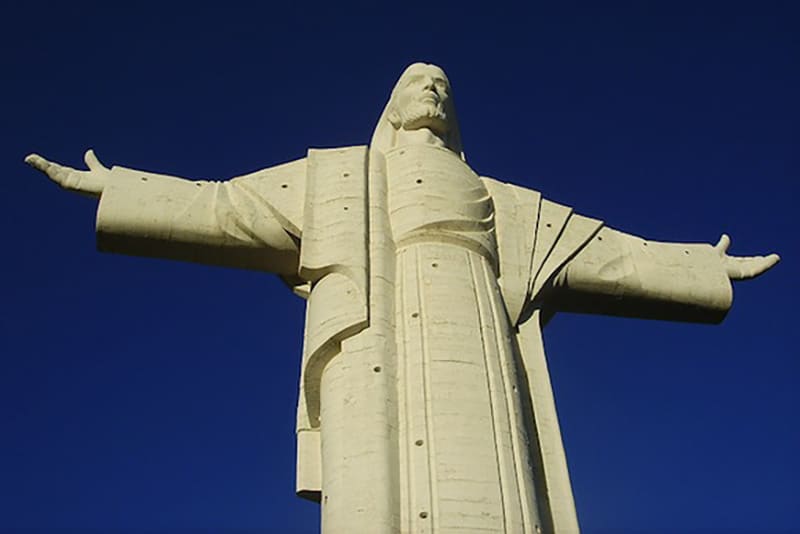
15 Fascinating Things You Didn’t Know About Bolivia
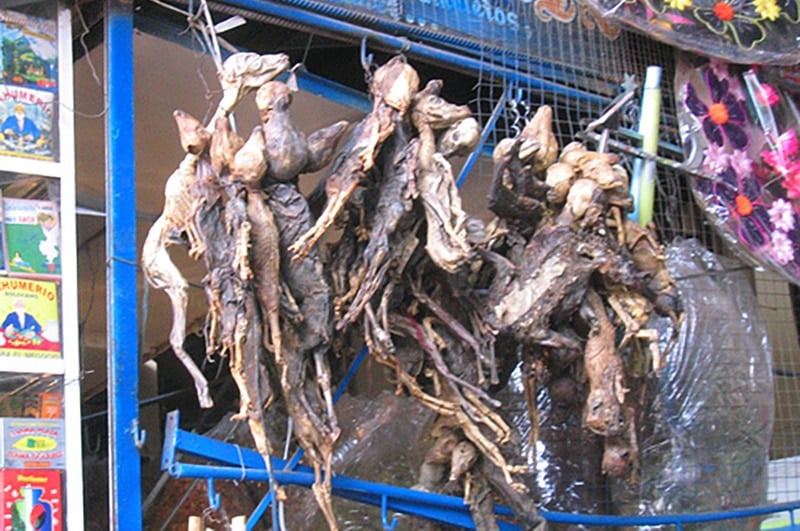
Want Good Luck In Bolivia? Buy A Llama Fetus!
Things To Do In Bolivia
Book the following Bolivia tourist attractions & experiences for an incredible trip!
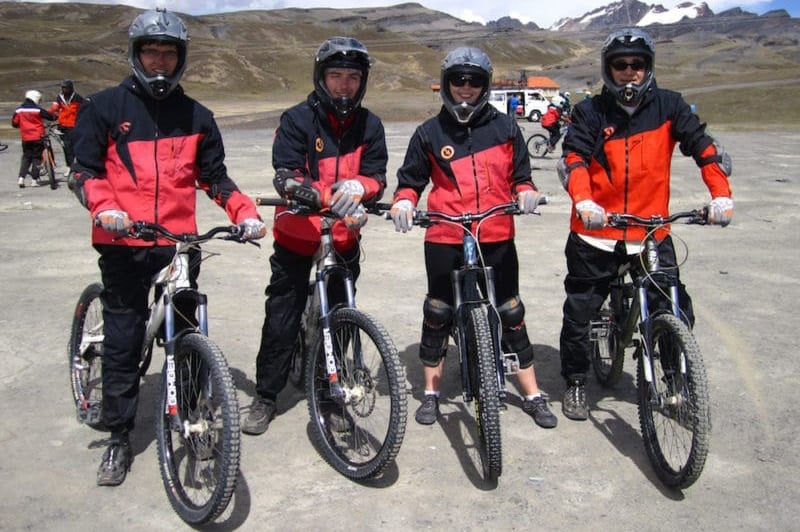
How To Bike Bolivia’s Death Road (& Survive)
Traveling In South America
These guides share Bolivia travel advice as well as tips for exploring South America in general!
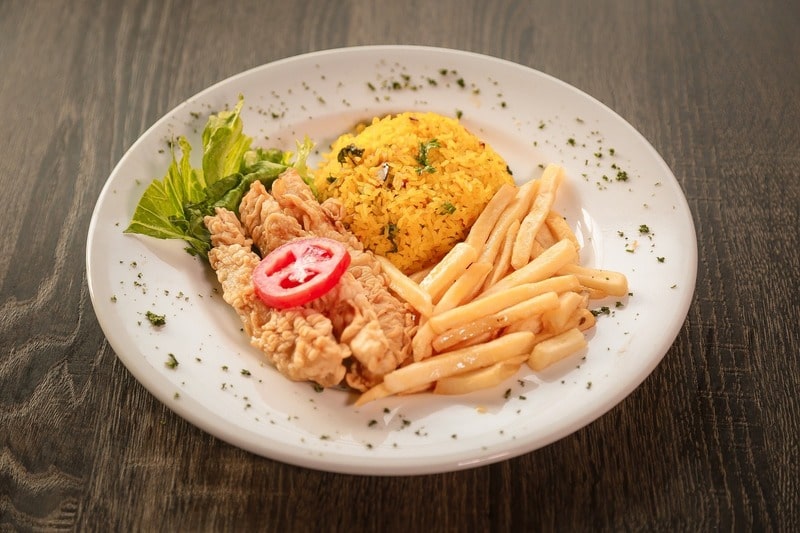
14 Essential Tips For Backpacking South America

My Most Ridiculous Bus Encounters Backpacking South America
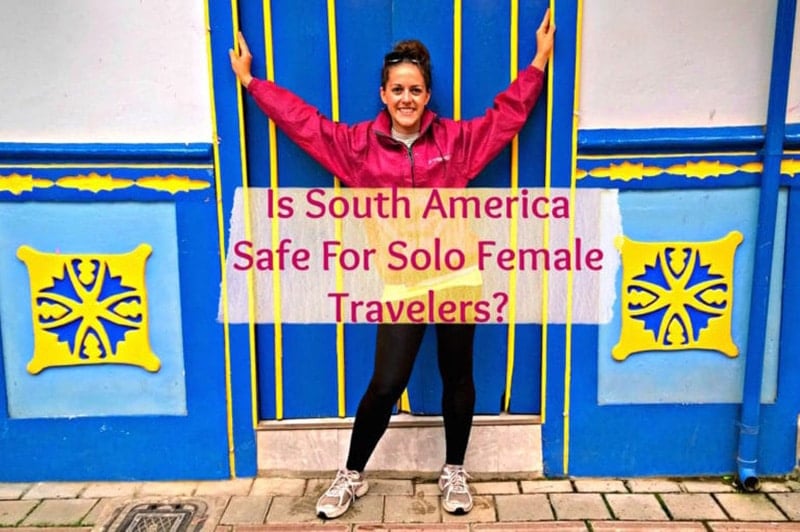
Is South America Safe For Solo Female Travelers?
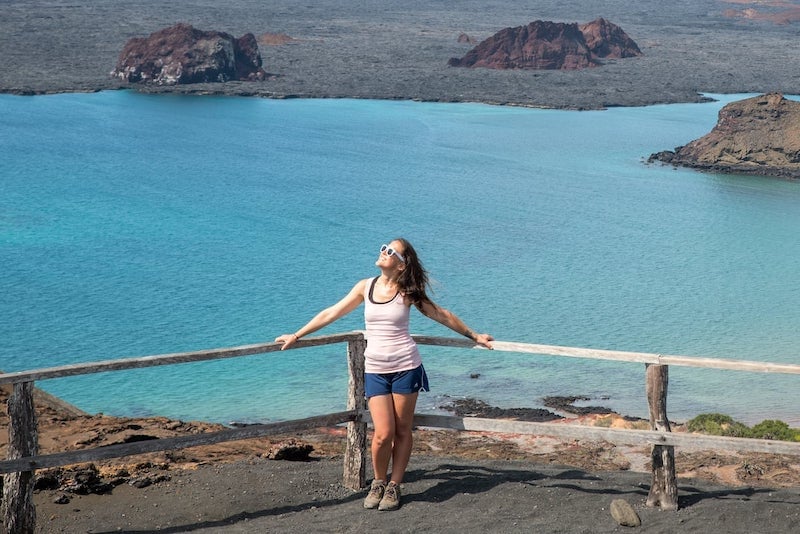
21 Best Places For Solo Travel In South America
Best Bolivia Tours
Explore local culture with a Bolivia tour guide through these unique excursions:
- 3-Day Tour to Salt Flats and Lagoons from Uyuni
- La Paz City Walking Tour Including Historical Streets
- Chacaltaya + Moon Valley from El Alto
- Death Road: Mountain Bike Tour on the World’s Most Dangerous Road from La Paz
- Climbing Huayna Potosí from La Paz
- Day Tour to Titicaca Lake from La Paz
Bolivia Hotels
Click here to browse the best Bolivia travel hotels!
Prefer self-contained stays?
Click here to check out unique local rentals !
You can also use this map to search for local stays:
Renting A Car In Bolivia
Need a rental car for your Bolivia trip?
Use Discover Cars to quickly compare your car rental options.
Bolivia Travel Insurance
It doesn’t matter if you’re traveling solo or with a group on a Bolivia tour. When visiting Bolivia — or any other country in the world — make sure to get travel insurance to protect your health and safety.
In my opinion, the best travel medical insurance for travelers is SafetyWing as they’ve got a large network and offer both short-term and long-term coverage — including coverage if you’re traveling for months as well as limited coverage in your home country).
Additionally, SafetyWing is budget-friendly and offers $250,000 worth of coverage with just one low overall deductible of $250.
With coverage, you’ll have peace of mind as you embark on your Bolivia travel itinerary.
Click my referral link here to price out travel insurance for your trip in just a few clicks .
Bolivia Travel Guide FAQ
Below, find answers to frequently asked questions about traveling in Bolivia .
Q: What are the best places to visit in Bolivia?
Bolivia is an amazing place to get outside and enjoy the wonders of nature and see truly once-in-a-lifetime sights.
One of the country’s most popular attractions is Salar de Uyuni , the world’s largest salt flat. Stretching nearly 11,000 square kilometers (4,247 square miles), this former prehistoric lake will make you feel like you’ve stepped onto another planet, with reflective landscapes as far as the eye can see.
The salt flat offers plenty of unique experiences, like an overnight stay in a salt hotel or a relaxing dip in the local hot springs. This is definitely one stop you won’t want to miss.
Truly daring bikers will want to take a ride on Death Road , a 40-mile downhill road that winds through Bolivia’s mountains.
As the name suggests, this isn’t exactly an experience for first-time bikers, and even if you’re experienced you still might want to ride with a tour guide. But the views from the cliffs and the adrenaline rush from the ride have made this road famous for a reason.
For a somewhat more relaxed experience, head to the famous Lake Titicaca , the largest lake in South America. Here, you can enjoy incredible views, explore Incan ruins, and check out man-made floating islands.
Bolivia is also home to many vibrant cities that are definitely worth exploring. The nation’s capital, La Paz , is a gorgeous city nestled into the mountains with tons of amazing sights to see and culture to take in.
Take a cable car up to the city’s highest peaks for incredible views of La Paz and the surrounding mountains. Explore old colonial cobblestone streets and stroll by colorful houses that date back to the 16th century.
And the adventurous can check out the Witches Market stocked with everything you need to commune with the divine, or just manifest some good luck (including llama fetuses ).
Beyond La Paz, the city of Sucre is the perfect place to check out Spanish colonial architecture and brush up on your language skills with fellow international travelers. The surrounding mountains and mild weather also make Sucre the perfect spot for hiking some of the world’s best trails .
For a look into Bolivia’s history, head to Potosi , home of the Cerro Rico silver mines. Once one of the most populous cities in the Americas, the city showcases gorgeous historic architecture that really tells the story of this country’s long history.
Q: Is Bolivia expensive for tourists?
Compared to other South American destinations, Bolivia is quite inexpensive for travelers. The average traveler spends about $42 USD per day in Bolivia on food, transportation, accommodations, activities, and other travel expenses.
You can generally find apartment rentals for less than $50 USD per night and hostels are easy to find, particularly in cities.
Food is also generally pretty inexpensive regardless of whether you’re eating at restaurant or from a street food vendor.
Q: What is the best way to travel around Bolivia?
Air travel is usually the quickest and most comfortable way to get around the country. Flights in Bolivia are pretty inexpensive and will help you get to out-of-the-way destinations without losing days to travel.
Buses are a popular (and inexpensive) mode of transportation in the country, but they can be uncomfortable and journeys can take much longer than advertised. If your plans are flexible (and you’re on a tight budget), this might be the best way to get around.
You can also book a direct route on a tourist-class bus for a bit more money for a quicker, more comfortable ride.
Q: Is Bolivia safe for travel?
Bolivia is relatively safe for travelers but does pose some more risks than other destinations. Violent crime rates have risen here in recent years and petty crime is a constant issue.
Pickpocketing and bag snatching does happen, particularly in cities and more tourist-heavy areas. Always stay aware of your surroundings and don’t flaunt any obvious signs of wealth when you’re out in public to avoid pickpockets .
You’ll also want to keep your valuables hidden and separate your money so it’s not all in one place.
Bolivia is also a bit riskier for solo female travelers , but you should be fine if you stay on the backpacker route and avoid going out alone after dark.
Q: What do I need to know before going to Bolivia?
Bolivia’s landscape is very diverse, which means that the weather can vary from place to place. The high altitudes of mountain destinations can leave you shivering in the cold if you’re not prepared, while you may find yourself facing high temperatures in the lowland regions.
If you’re doing a big tour of the country and visiting several different destinations, pack accordingly. Do some research on each place you plan to visit and make sure you’re prepared with appropriate clothing.
Also, the sun is also strong wherever you go in Bolivia, so don’t forget the SPF!
If you’re not used to high altitudes, you may find yourself feeling a little woozy once you enter the highlands. If you’re facing altitude sickness, the best thing to do is to take care of yourself as best you can. Rest when you need to, drink lots of water, limit your alcohol intake, and ascend slowly if you can.
You might also want to pack appropriate medications in case you experience symptoms. Ibuprofen is always great for headaches and acetazolamide and dexamethasone can help with more specific altitude sickness symptoms. Be sure to ask your doctor if these medications are appropriate for you before your trip.
Most businesses in Bolivia don’t accept credit cards, so you’ll want to make sure you have cash on hand. Better yet, keep some spare cash in your luggage — you’ll find ATMs in most towns here but they’re not always reliable. It’s always helpful to have a backup stash in a safe place just in case you can’t access your funds.
Q: How many days should you spend in Bolivia?
Most experts suggest spending about a week in Bolivia. This should give you enough time to see the major sights like Salar de Uyuni, Lake Titicaca, and La Paz and will give you enough wiggle room to travel from destination to destination.
On a 10-day trip, you can build in some time to visit other great destinations like Sucre and Tupiza.
Q: What is the best month to visit Bolivia?
Bolivia’s climate varies throughout the country, but you’ll find that the dry season (April through October) is usually the best time to visit. Temperatures are a bit cooler but without the extreme weather of the wet season, traveling around the country is much easier.
The country’s peak season runs from June through September so plan to visit during a different time if you want to avoid the crowds.
Q: Do I need a Bolivia travel visa?
Visitors from the United States do need a visa to visit Bolivia. U.S. citizens can obtain a tourist visa for free prior to their trip from their local Bolivian Embassy or Consulate or purchase a visa at the border.
Visitors with a visa can stay in the country for up to 30 days per trip, not to exceed 90 days per year. To obtain a visa, visitors must show proof of a round-trip ticket and lodging in Bolivia (i.e. a hotel reservation or, if you’re staying with family or friends, a letter of invitation). Visitors also must show an International Certificate of Yellow Fever Vaccination.
Travelers from Canada, the United Kingdom, the European Union, and Australia do not need a visa to enter Bolivia.
It’s recommended to view your country’s Bolivia International Travel Information page for the most up-to-date information on entry and exit rules and Bolivia Travel Requirements. You can also contact the Consulate General of Bolivia.
Q: Where is Bolivia?
Bolivia is located in west-central South America. It shares borders with Brazil (north and east), Paraguay (southeast), Argentina (south), Chile (southwest and west), and Peru (northwest).
Q: Are credit cards accepted in Bolivia?
Credit cards — particularly Visa and Mastercard — are typically accepted at larger establishments in Bolivia, though it is always wise to carry some cash for smaller establishments and in case of emergency.
Q: Can you drink the tap water in Bolivia?
The tap water is typically not safe to drink in Bolivia. Luckily, it is easy to find bottled water throughout the country. Or, better yet, you can bring a filtration bottle to limit your plastic usage.
Q: What is the local currency in Bolivia?
The local currency in Bolivia is the Bolivian boliviano (BOB).
What would you add to this Bolivia travel guide?

Enjoyed this ultimate Bolivia travel guide? Pin it for later!
Travel Guide Bolivia
Book your individual trip , stress-free with local travel experts
- roughguides.com
- South America
- Travel guide
- Itineraries
- Local Experts
- Travel Advice
- Accommodation
Plan your tailor-made trip with a local expert
Book securely with money-back guarantee
Travel stress-free with local assistance and 24/7 support
Stretching from the majestic icebound peaks and bleak high-altitude deserts of the Andes to the exuberant rainforests and vast savannahs of the Amazon basin , Bolivia embraces an astonishing range of landscapes and climates. This mystical terrain boasts scores of breathtaking attractions including stark otherworldly salt pans, ancient Inca trails and towering volcanic peaks. Landlocked at the remote heart of South America, Bolivia rewards the adventurous travellers and encompasses everything that outsiders find most exotic and mysterious about the continent.
Where to go in Bolivia
Tailor-made travel itineraries for bolivia, created by local experts.

4 days / from 1320 USD
Highlights of Bolivia
Bolivia for those on a tight timeline. In just 4 days, you will visit the de facto capital La Paz, a day tour to Lake Titicaca with the beautiful Copacabana town. A short flight to Uyuni will allow you to explore the wonders of salt processing before heading back to La Paz.

16 days / from 5050 USD
Andean Triangle - Chile, Bolivia and Argentina
Start your South American adventure in Santiago de Chile before exploring the wonders of the Atacama desert. A short hop across the border and you'll find yourself in the middle of the Bolivian salt flat. Afterwards, you'll continue to Argentina with Salta and Buenos Aires.

14 days / from 2271 USD
Multi-country adventures from salt flats to the Andes
South America is full of wonders and this trip packs Argentina, Chile and Bolivia into 2 weeks. Bustling Buenos Aires, beautiful valleys around Salta, the surreal looking surroundings of San Pedro de Atacama, the salt flat of Uyuni as well as Lake Titicaca are all part of this itinerary.
The country’s cultural diversity and ethnic make-up are equally fascinating. Three centuries of colonial rule have left their mark on the nation’s language, religion and architecture, but this is essentially little more than a veneer overlying indigenous cultural traditions that stretch back long before the arrival of the Spanish. Though superficially embracing the Catholic religion, many Bolivians are equally at home making offerings to the mountain gods or performing other strange rites, such as blessing vehicles with libations of alcohol. And although Spanish is the language of government and business, the streets buzz with the cadences of Aymara, Quechua and more than thirty other indigenous languages .
Geographically, Bolivia is dominated by the Andes, which march through the west in two parallel chains, each studded with snowcapped peaks ; between them stretch the barren, windswept expanses of the Altiplano . Reached via a series of lush valleys, the country’s lowlands range from dense Amazonian rainforest to vast plains of dry thornbrush and scrub. The geographical extremes are fascinating to explore, but can take their toll on travellers. This varied topography supports an extraordinary diversity of flora and fauna from condors to pink freshwater dolphins– Parque Nacional Amboró, for example, has over 830 species of bird, more than the US and Canada combined. The country’s underdevelopment has in some ways been a blessing for the environment, allowing vast wilderness areas to survive in a near-pristine condition.
Though it covers an area the size of France and Spain combined, Bolivia is home to just under ten million people, who are concentrated in a handful of cities founded by the Spanish . Some of these, such as Potosí and Sucre, were once amongst the most important settlements in the Americas, but are now half-forgotten backwaters, basking in the memory of past glories and graced by some of the continent’s finest colonial architecture. Others, like La Paz and Santa Cruz, have grown enormously, and are now bustling commercial centres .
Despite these attractions, Bolivia remains one of South America’s least-visited countries. Some blame Queen Victoria, who after a diplomatic incident is said to have crossed the name from a map and declared that “Bolivia does not exist”. Among those who have heard a little about Bolivia, meanwhile, it has a reputation for cocaine trafficking and political instability . These clichéd images have some basis in reality, though the 2006 election of Evo Morales has reduced the instability to a certain extent, and Bolivia remains one of the continent’s safest countries for travellers. And for those who make it here, the fact that Bolivia – one of the continent’s least expensive countries – is still not yet on the major tourist routes means you’re unlikely to find yourself sharing the experience with hordes of other foreign visitors.
Most visitors spend a few days in the fascinating city of La Paz, Bolivia’s de facto capital (Sucre is its official capital), which combines a dramatic high-altitude setting with a compelling blend of traditional indigenous and modern urban cultures. La Paz is also close to magical Lago Titicaca, the massive azure lake that straddles the Peruvian border, and is a good base for trekking, climbing or mountain biking in the magnificent Cordillera Real.

Just north of La Paz the Andes plunge precipitously down into the Amazon basin through the deep, lush valleys of the Yungas. The Yungas towns of Coroico and Chulumani are perfect places to relax, while Coroico also makes a good place to break the overland journey from La Paz to the Bolivian Amazon. The best base for visiting the Amazon is the town of Rurrenabaque, close to the near-pristine rainforests of Parque Nacional Madidi and the wildlife-rich Río Yacuma. More adventurous travellers can head east across the wild savannahs of the Llanos de Moxos via the Reserva de la Bíosfera del Beni to the regional capital Trinidad, the start of exciting trips north along the Río Mamoré towards Brazil or south towards Cochabamba.
South of La Paz, the bleak southern Altiplano – stretching between the eastern and western chains of the Andes – is home to some of Bolivia’s foremost attractions. The dour mining city of Oruro springs to life during its Carnaval, one of South America’s most enjoyable fiestas, and the legendary silver mining city of Potosí offers a treasure-trove of colonial architecture and the opportunity to visit the Cerro Rico mines.
Further south, Uyuni is the jumping-off point for expeditions into the astonishing landscapes of the Salar de Uyuni and the Reserva de Fauna Andina Eduardo Avaroa, a remote region of high-altitude deserts and half-frozen, mineral-stained lakes, populated by flamingos. Further south lie the cactus-strewn badlands and canyons around Tupiza and the isolated but welcoming city of Tarija.
To the north of Potosí, Bolivia’s official capital, Sucre, boasts fine colonial architecture, but the city is very different in character: charming and refined, it is set in a warm Andean valley in the midst of a region noted for its textiles. Further north, the city of Cochabamba has less obvious appeal, but offers a spring-like climate and a friendly welcome. Not far from here are the rainforests and coca fields of the Chapare region, but for most travellers Cochabamba is just somewhere to break the journey between La Paz and Santa Cruz, the country’s eastern capital. Completely different in character to the highland cities, Santa Cruz is a brash, modern and lively tropical metropolis. Though it has few attractions itself, the city is a good base for exploring the Eastern Lowlands, including the rainforests of Parque Nacional Amboró and the idyllic town of Samaipata. Scattered across the lowlands east of Santa Cruz, the immaculately restored Jesuit missions of Chiquitos provide one of Bolivia’s most unusual attractions, while a train line heads east to the Brazilian border and the wildlife-rich wetlands of the Pantanal. Santa Cruz is also the jumping-off point for trips to the remote and spectacular Parque Nacional Noel Kempff Mercado.
Top image © Loredana Habermann/Shutterstock
Coca: Sacred leaf of the Andes
Nothing is more emblematic of Bolivia than coca , the controversial leaf that has been cultivated for thousands of years in the Andean foothills. To ordinary Bolivians, coca is at once a useful stimulant to combat hunger and tiredness, a medicine for altitude sickness and a key religious and cultural sacrament with magical powers used in rituals and offerings. To the outside world, however, it is infamous as the raw material for the manufacture of cocaine (as well as, reputedly, still a key ingredient of Coca-Cola).
Thousands of farmers depend on coca for their livelihoods, and President Evo Morales – who remains head of the biggest coca-growing union – has repeatedly stressed that the leaf is an intrinsic part of indigenous Andean culture. Although Morales has promised a policy of “zero cocaine but not zero coca”, Bolivia remains the world’s third-largest producer of the drug, and cocaine use within the country has risen dramatically in recent years. In 2011 the country renounced a UN anti-drug convention because it classified the coca leaf as an illegal drug.
Discover more places in Bolivia

- The Amazon Travel Guide
- The southern Altiplano Travel Guide
• They look similar at a glance but alpacas have shorter legs, necks and snouts than llamas, and also have a fluffier fleece.
• Named after Simón Bolívar, Bolivia won its independence in 1825, after nearly three centuries as a Spanish colony.
• In 2001 the highest football match in the world was played on the top of the 6542m Sajama volcano.
• A bridge stretching from Potosí to Spain could reputedly have been built with the silver extracted from the Cerro Rico mines during the colonial period.
• Since independence, Bolivia has lost almost half its territory, including its Pacific coast, which was captured by Chile in 1879.Despite being landlocked, the country still has a navy.
Travel advice for Bolivia
From travel safety to visa requirements, discover the best tips for traveling to Bolivia
- Eating and drinking in Bolivia
- Getting around Bolivia: Transportation Tips
- Travel Health Bolivia
- Crime and personal safety tips Bolivia
- Culture and Etiquette in Bolivia
- National Parks in Bolivia
- Sports and Outdoor activities in Bolivia
- Travel Tips Bolivia for planning and on the go
- Best time to visit Bolivia
- How to get to Bolivia
The Rough Guides to Bolivia and related travel guides
In-depth, easy-to-use travel guides filled with expert advice.

Find even more inspiration here

Planning your own trip? Prepare for your trip
Use Rough Guides' trusted partners for great rates
written by Rough Guides Editors
updated 26.04.2021
Ready to travel and discover Bolivia?
Get support from our local experts for stress-free planning & worry-free travels.
- Where to stay
- Travel advice

- Destinations
Bolivia Travel Guide
- Terms of Use
- Privacy Policy
- Your US State Privacy Rights
- Children's Online Privacy Policy
- Interest-Based Ads
- About Nielsen Measurement
- Do Not Sell or Share My Personal Information
- Nat Geo Home
- Attend a Live Event
- Book a Trip
- Inspire Your Kids
- Shop Nat Geo
- Visit the D.C. Museum
- Learn About Our Impact
- Support Our Mission
- Advertise With Us
- Customer Service
- Renew Subscription
- Manage Your Subscription
- Work at Nat Geo
- Sign Up for Our Newsletters
- Contribute to Protect the Planet
Copyright © 1996-2015 National Geographic Society Copyright © 2015-2024 National Geographic Partners, LLC. All rights reserved
Winter is here! Check out the winter wonderlands at these 5 amazing winter destinations in Montana
- Travel Destinations
- Central & South America
The Ultimate Bolivia Travel Guide
Published: October 17, 2023
Modified: December 28, 2023
by Kathrine Erickson
- Plan Your Trip
- Travel Guide
Introduction
Welcome to Bolivia, a captivating country located in the heart of South America. With its rich indigenous heritage, stunning natural landscapes, and vibrant cultural traditions, Bolivia offers a unique travel experience that is sure to leave you enthralled. From the towering peaks of the Andes mountains to the vast stretches of the Amazon rainforest, Bolivia is a land of breathtaking beauty and adventure.
As you explore this diverse country, you’ll encounter a fascinating blend of ancient Inca ruins, colonial architecture, and modern bustling cities. Whether you’re wandering through the vibrant markets of La Paz, exploring the mystical ruins of Tiwanaku, or taking a boat tour on the sprawling Lake Titicaca, Bolivia has something to offer every type of traveler.
One of the major highlights of Bolivia is its natural wonders. You can embark on an unforgettable journey through the mesmerizing Uyuni Salt Flats, where the endless white expanse stretches as far as the eye can see. Or, you can venture into the Amazon rainforest, home to a stunning array of flora and fauna, including jaguars, macaws, and pink river dolphins.
But Bolivia is not just about epic landscapes – its vibrant culture and traditions are equally captivating. Indigenous cultures have preserved their heritage through vibrant festivals, intricate textiles, and traditional music and dance. The warmth and hospitality of the Bolivian people will make you feel welcome, whether you’re exploring the bustling streets of Sucre or immersing yourself in the indigenous communities of the Yungas region.
In this ultimate Bolivia travel guide, we will provide you with all the essential information you need to plan your trip to this incredible country. From visa requirements and transportation options to top tourist destinations and safety tips, we’ve got you covered. So pack your bags, get ready for an adventure of a lifetime, and immerse yourself in the rich and colorful tapestry that is Bolivia.
Geography and Climate
Bolivia is a landlocked country in South America, bordered by Brazil to the north and east, Paraguay and Argentina to the south, and Chile and Peru to the west. The country’s geography is incredibly diverse, ranging from towering Andean peaks to vast lowland plains and dense rainforests. Bolivia is also home to the mesmerizing Uyuni Salt Flats, the largest salt flat in the world.
The Andes Mountains dominate the western part of Bolivia, with peaks reaching elevations of over 6,000 meters (19,685 feet). This region offers stunning landscapes, including snow-capped mountains, deep valleys, and crystal-clear lakes. The eastern part of the country is characterized by tropical lowlands, known as the Amazon Basin, with lush rainforests, winding rivers, and abundant wildlife.
Due to its varying altitudes and geographic features, Bolivia experiences a diverse range of climates. In the highland regions, such as La Paz and Potosi, the climate is generally cold and dry, with temperatures dropping significantly at night. The summer months of November to March bring slightly higher temperatures, but it is still advisable to pack warm clothing.
In the lowland areas, including the Amazon Basin and parts of Santa Cruz, the climate is tropical and humid, with heavy rainfall occurring between November and March. The temperatures remain relatively high throughout the year, making it a perfect destination for those who enjoy warmer climates.
It is important to note that the weather conditions can vary greatly depending on the altitude and region you are visiting. If you plan to explore the Andean peaks or the Uyuni Salt Flats, be prepared for potentially harsher weather conditions, including strong winds and extreme temperature fluctuations.
Regardless of the region you choose to visit, it is always a good idea to pack a variety of clothing options and be prepared for changes in weather. Lightweight, breathable clothing is recommended for the lowland areas, while warm layers and waterproof outerwear are essential for the highland regions.
Overall, Bolivia’s geography and climate offer a diverse range of experiences for travelers. Whether you wish to climb towering mountains, explore sprawling rainforests, or marvel at the surreal beauty of the Uyuni Salt Flats, Bolivia has something for everyone.
Visa Requirements
Before traveling to Bolivia, it is essential to understand the visa requirements to ensure a smooth entry into the country. The visa regulations for Bolivia vary depending on your nationality, the purpose of your visit, and the length of your stay.
For many countries, including the United States, Canada, and European Union member states, a tourist visa is not required if your stay is less than 90 days. You will receive an entry stamp upon arrival, and you must have a valid passport with at least six months of validity remaining.
However, it is crucial to check the specific visa requirements for your country of residence before traveling to Bolivia. Some countries may require a visa for any length of stay or impose different visa rules. You can consult the Bolivian embassy or consulate in your home country to obtain the most accurate and up-to-date information.
If you plan to stay in Bolivia for more than 90 days or if you have a different purpose for your visit, such as business, study, or work, you will need to apply for the appropriate visa in advance. The application process typically involves providing documentation such as a letter of invitation, proof of financial means, and a criminal background check.
For those planning to engage in volunteer work or participate in certain activities, it is advisable to check if any additional permits or visas are required. Some regions or protected areas may have specific entry requirements or restrictions.
It is recommended to apply for your visa well in advance of your planned travel date to allow for sufficient processing time. Keep in mind that visa regulations can change, so it is essential to stay informed and consult official sources for the most up-to-date information.
Upon arrival in Bolivia, you may also be required to pay a reciprocity fee depending on your nationality. This fee is typically payable in cash and allows entry into the country. The amount can vary, so it is advisable to check the current fee and have the appropriate currency on hand.
Remember to keep all necessary documents, including your passport, visa, and entry stamp, in a safe place throughout your stay in Bolivia. It is also a good practice to make copies of your important documents and store them separately as a precaution.
By understanding and fulfilling the visa requirements for Bolivia, you can ensure a hassle-free and enjoyable experience exploring this captivating South American destination.
Currency and Money Matters
When visiting Bolivia, it is important to familiarize yourself with the local currency and have a clear understanding of money-related matters to make your trip more convenient and hassle-free.
The official currency of Bolivia is the Bolivian Boliviano (BOB). It is advisable to exchange your currency for Bolivianos upon arrival to have the local currency readily available for your expenses.
Banks and exchange offices are widely available throughout the country, especially in major cities such as La Paz and Santa Cruz. It is recommended to exchange money at official exchange bureaus or banks to ensure fair rates and avoid counterfeit currency.
Major credit and debit cards are widely accepted in many establishments, including hotels, restaurants, and larger stores in urban areas. However, it is important to note that smaller establishments, markets, and more rural areas may still prefer cash payments.
ATMs are also readily available in most cities and towns, and they usually offer the option to withdraw local currency using your debit or credit card. However, it is advisable to inform your bank or credit card company about your travel plans to avoid any issues with accessing your funds.
While traveling in Bolivia, it is recommended to carry smaller denomination bills and coins, as it may be challenging to get change for larger bills, especially in local markets or smaller establishments.
In terms of budgeting for your trip, Bolivia is generally considered an affordable destination for travelers. Prices for accommodations, meals, and transportation can vary depending on your chosen level of comfort and location. Major cities and tourist areas tend to have higher prices compared to more rural regions.
It is important to note that bargaining is common in markets and smaller stores in Bolivia. While fixed prices are typically observed in larger establishments and supermarkets, bargaining can be a cultural practice in certain situations, such as when purchasing souvenirs or in local markets.
It is also essential to be mindful of your personal safety and security when handling money in Bolivia. Keep your belongings secure and be cautious when using ATMs, especially in crowded areas. It is advisable to utilize ATMs located in secure and well-lit areas, such as within banks or shopping centers.
Lastly, it is always a good idea to have some emergency funds or a backup payment method, such as a credit card or traveler’s checks, in case of unforeseen circumstances or emergencies.
By familiarizing yourself with the currency, money exchange options, and local payment practices, you can navigate the financial aspects of your trip to Bolivia with ease and enjoy your travel experience to the fullest.
Best Time to Visit
The best time to visit Bolivia depends on the specific regions and activities you plan to engage in during your trip. Due to its diverse geography and varying climates, different parts of the country experience different weather patterns throughout the year.
The highland areas, including La Paz, Sucre, and Potosi, have a cool and dry climate, with the dry season lasting from May to October. This period is considered the best time to visit for outdoor activities and exploring the Andean landscapes. Daytime temperatures are generally pleasant, although nights can get quite chilly, especially at higher altitudes.
If you’re interested in trekking or climbing, the months of May to September offer the best weather conditions with clear skies and lower chances of rainfall. However, it’s important to be prepared for the colder temperatures, especially during overnight stays in mountainous regions.
The wet season in the highlands typically occurs from November to April, with frequent rainfall and occasional thunderstorms. While the landscapes become lush and green during this time, trekking and outdoor activities can be more challenging due to muddy trails and limited visibility.
In the lowland regions, including the Amazon Basin and parts of Santa Cruz, the climate is generally hot and humid throughout the year. The dry season from May to October is typically considered the best time to visit these areas, as rainfall is less frequent, and temperatures are slightly cooler.
During the wet season from November to April, the rainforest comes to life with vibrant vegetation and an abundance of wildlife. However, heavy rainfalls and high humidity can make exploration more difficult, and some areas may become inaccessible due to flooding.
Another factor to consider when planning your visit to Bolivia is the country’s festivals and cultural events. The most famous and vibrant festival in Bolivia is the Carnival of Oruro, held in February or March, showcasing colorful costumes, traditional dances, and music that celebrate the country’s rich cultural heritage.
Overall, the best time to visit Bolivia varies depending on your desired activities and regions of interest. To make the most of your trip, it is advisable to check the specific weather conditions and plan accordingly. Whether you’re seeking trekking adventures in the highlands, wildlife encounters in the rainforest, or cultural immersion in bustling cities, Bolivia has something to offer year-round.
Getting to Bolivia
Getting to Bolivia is relatively straightforward, with various options available to suit different preferences and budgets. Whether you’re arriving by air, land, or water, here are the main ways to reach this stunning South American country.
By Air: The easiest and most convenient way to reach Bolivia is by flying into one of the international airports. The main international gateway is El Alto International Airport (LPB) located in La Paz, which offers direct flights from major cities in the United States, Europe, and other South American countries. The city of Santa Cruz also has Viru Viru International Airport (VVI), which serves as another major entry point for international travelers.
By Land: If you’re already in a neighboring country, you can choose to travel to Bolivia by land. The most common land border crossings are from Peru, Chile, Argentina, and Brazil. Buses and private cars are popular modes of transportation for land travel, and there are well-established routes and border crossings to choose from.
By Water: For a unique and adventurous journey, you can enter Bolivia via the Amazon River. From Brazil, you can take a riverboat from Manaus to the Bolivian town of Guayaramerín. From there, you can continue your journey by land to other Bolivian destinations.
Once you arrive in Bolivia, you can travel within the country using a combination of domestic flights, buses, and taxis. Domestic flights are available between major cities and tourist destinations, providing a convenient way to cover long distances quickly. Buses, both local and long-distance, are widely available and offer a more budget-friendly option for traveling within the country. Taxis and ride-sharing services are also prevalent in urban areas.
It is worth noting that Bolivia’s transportation infrastructure may vary in different regions. While major cities have well-developed road networks and transportation services, more rural areas and remote destinations may have limited transportation options. It is advisable to plan your itinerary accordingly and research the transportation options available in each specific area you plan to visit.
Before traveling to Bolivia, it is important to check any entry requirements, such as visas and vaccination requirements, and to ensure that your passport is valid for at least six months beyond your intended stay. It is also recommended to have travel insurance that covers medical expenses and trip cancellations.
With its diverse landscapes and rich cultural heritage, Bolivia is a destination that offers a unique and unforgettable travel experience. By choosing the most suitable transportation method for your journey, you’ll be on your way to exploring the wonders this country has to offer.
Transportation in Bolivia
Getting around Bolivia is an adventure in itself, with various transportation options available to explore the country’s diverse landscapes and vibrant cities. From navigating bustling streets to traversing remote regions, here are the main modes of transportation to consider when traveling within Bolivia.
Buses: Buses are the primary mode of transportation for both short and long distances in Bolivia. There are different types of buses available, ranging from small minibusses to larger coaches. Local buses are commonly used for short journeys within cities and towns, while long-distance buses connect major cities and tourist destinations. It is advisable to book tickets in advance for longer trips, as buses can fill up quickly, especially during peak travel seasons.
Taxis and Ride-sharing: Taxis are a popular and convenient way to get around in urban areas. It is recommended to use official taxi services or trusted ride-sharing apps to ensure safety and avoid scams. Negotiate the fare with the taxi driver before starting the journey or ensure the ride-sharing app displays the estimated fare upfront.
Domestic Flights: Bolivia has a well-connected domestic flight network, which is particularly useful for covering long distances quickly. Domestic flights operate between major cities, such as La Paz, Santa Cruz, and Cochabamba, as well as popular tourist destinations like Uyuni and Rurrenabaque. It is advisable to book domestic flights in advance, especially during peak travel seasons.
Trains: While not as extensive as the bus network, Bolivia does have a limited train service that connects certain cities and towns. The most popular train route is the scenic journey from Oruro to Uyuni, which takes you through the stunning landscapes of the Altiplano region. It is advisable to check the train schedule and book tickets in advance, as availability can be limited.
Rentals and Private Cars: Renting a car or hiring a private driver can provide flexibility and convenience, especially for exploring remote areas or embarking on road trips. However, it is important to note that road conditions in Bolivia can vary, and driving can be challenging, particularly in mountainous regions or rural areas. Make sure to have an international driver’s license and familiarize yourself with local driving regulations and customs.
When using transportation in Bolivia, it is essential to exercise caution and be aware of your surroundings, particularly regarding personal belongings and safety. Keep your belongings with you at all times and avoid displaying valuable items that may attract unwanted attention.
It is also worth noting that transportation options and schedules may be less frequent or limited in more remote regions of Bolivia. It is advisable to plan your itinerary and check transportation availability in advance, particularly if you are visiting less-traveled areas.
By utilizing the various transportation options available, you can navigate Bolivia’s vast landscapes and vibrant cities, ensuring a memorable and enjoyable travel experience.
Accommodation Options
When planning your trip to Bolivia, you’ll find a range of accommodation options to suit different preferences and budgets. From cozy guesthouses to luxurious hotels, here are the main types of accommodations available throughout the country.
Hotels: Bolivia offers a variety of hotels, ranging from budget-friendly options to higher-end establishments. Major cities like La Paz, Santa Cruz, and Sucre have a wide selection of hotels, with amenities such as private bathrooms, Wi-Fi, and onsite restaurants. In more remote areas, hotels may be simpler, but still provide the necessary comforts for a pleasant stay.
Hostels: Hostels are a popular choice among budget-conscious travelers and backpackers. They typically offer dormitory-style rooms with shared facilities, as well as private rooms for those seeking more privacy. Hostels are a great option for meeting fellow travelers and often provide communal spaces like common rooms or kitchens.
Guesthouses: Guesthouses, or “casas de huéspedes,” are smaller, family-run accommodations that offer a more intimate and personal experience. These establishments often provide comfortable rooms with basic amenities and may include home-cooked meals for guests. Guesthouses can be found in both urban and rural areas, providing an authentic glimpse into local culture and hospitality.
Eco-Lodges: For those seeking a more eco-friendly and nature-centric experience, Bolivia offers various eco-lodges located in remote and environmentally sensitive areas. These lodges blend harmoniously with their natural surroundings and provide unique opportunities to explore the country’s incredible biodiversity while minimizing environmental impact.
Apartments and Vacation Rentals: If you prefer the convenience and flexibility of having your own space, apartments and vacation rentals are available in some urban areas and tourist destinations. These options are ideal for families or larger groups, as they often offer multiple bedrooms, living areas, and kitchen facilities.
When choosing accommodations in Bolivia, it’s essential to consider factors such as location, amenities, and safety. Researching customer reviews and checking the reputation of the establishment can help ensure a comfortable and secure stay.
It’s also worth noting that prices for accommodations in Bolivia can vary depending on the location and level of comfort. Major cities and tourist hotspots tend to have higher prices compared to more rural or less-visited areas. Planning your accommodation in advance, particularly during peak travel seasons, is advisable to secure your preferred choice.
Whether you’re seeking cultural immersion in a local guesthouse, a comfortable stay in a hotel, or a budget-friendly experience in a hostel, Bolivia offers a range of accommodation options to suit every traveler’s needs and preferences.
Top Tourist Destinations
Bolivia is a country rich in natural beauty, ancient ruins, and vibrant cultural heritage. From the towering peaks of the Andes to the lush rainforests of the Amazon, Bolivia offers a plethora of enchanting destinations to explore. Here are some of the top tourist destinations in the country:
1. La Paz: As the administrative capital of Bolivia, La Paz is a bustling metropolis nestled in the Andes Mountains. The city is famous for its vibrant markets, such as the Witches’ Market, where you can find unique traditional crafts, herbs, and spiritual items. Don’t miss the chance to visit the stunning Valle de la Luna (Moon Valley) or take a cable car ride for panoramic views.
2. Salar de Uyuni: The breathtaking salt flats of Uyuni are a must-visit destination in Bolivia. The vast expanse of white salt crystals creates a mesmerizing natural landscape that seems to stretch endlessly. Take a jeep tour across the flats and witness the stunning mirror-like reflections during the wet season or explore the Incahuasi Island, known for its giant cacti.
3. Lake Titicaca: Shared with Peru, Lake Titicaca is the highest navigable lake in the world and a place of cultural significance. Take a boat tour to the peaceful Isla del Sol (Island of the Sun) and explore ancient Inca ruins or spend the night in a traditional homestay with local families on the islands.
4. Sucre: Known as Bolivia’s constitutional capital, Sucre is a city of colonial charm and architectural beauty. Stroll through its historic center, a UNESCO World Heritage Site, where you can admire stunning churches, visit museums, and explore the city’s rich history. Don’t miss the chance to visit the nearby Tarabuco market, known for its vibrant indigenous textiles.
5. Potosi: Once one of the wealthiest cities in the world, Potosi is a UNESCO World Heritage Site known for its rich silver mining history. Explore the famous Cerro Rico mines, visit the Casa de la Moneda museum, and stroll along the colonial streets lined with beautiful churches and grand mansions.
6. Rurrenabaque: This gateway to the Bolivian Amazon offers a chance to immerse yourself in the lush rainforests and incredible biodiversity. Take a jungle tour to spot wildlife, embark on riverboat trips along the Beni and Tuichi rivers, or visit the nearby pampas to see pink river dolphins and caimans in their natural habitat.
These are just a few of the many incredible destinations that Bolivia has to offer. Each region has its own unique beauty and attractions, from the stunning landscapes of the Andes to the rich cultural heritage of ancient civilizations. Whether you’re a nature enthusiast, history buff, or cultural explorer, Bolivia has something for everyone.
Cultural Etiquette and Customs
When visiting Bolivia, it is important to be mindful of the cultural etiquette and customs to show respect and appreciation for the local traditions. Here are some important considerations to keep in mind:
Greetings and Respect: Bolivians generally greet each other with a handshake, although close friends and family members may greet with a kiss on the cheek. It is customary to use formal titles such as “Señor” (Mr.) or “Señora” (Mrs.) when addressing older people or those in positions of authority.
Respect for Pachamama: Pachamama, the earth mother goddess, holds significant importance in Bolivian culture. It is customary to show respect for Pachamama by offering small food items or coca leaves before starting a meal or engaging in certain activities, especially in rural and indigenous communities.
Dress Code: While Bolivia is generally a relatively relaxed country in terms of dress code, it is important to dress modestly and respectfully, particularly when visiting religious sites or indigenous communities. It is advisable to cover your shoulders and knees and avoid wearing revealing clothing out of respect for local customs and beliefs.
Communication and Language: Spanish is the official language of Bolivia, but indigenous languages such as Quechua and Aymara are also widely spoken. Learning a few basic phrases in Spanish, such as greetings and simple pleasantries, can go a long way in showing respect and building connections with the locals.
Photography Etiquette: When taking photographs of people, it is polite to ask for permission first, especially in indigenous communities. Some individuals may request a small tip in exchange for being photographed. In religious sites, always check if photography is allowed, and be respectful of sacred spaces and rituals.
Tipping: Tipping is not mandatory in Bolivia, but it is appreciated for good service. In restaurants, leaving a 5-10% tip is common. It’s also customary to tip local guides and drivers for their services during tours or excursions, although the amount is at your discretion.
Cultural Sensitivity: Bolivia is a culturally diverse country with indigenous populations that uphold their customs and beliefs. It is important to approach different cultures with an open mind and respect their practices. Avoid making assumptions or judgments, and be willing to learn and appreciate the rich cultural heritage of Bolivia.
By being respectful, observant, and appreciative of local customs, you can foster meaningful connections with the people of Bolivia and enhance your travel experience in this culturally rich country.
Popular Activities and Adventures
Bolivia offers a plethora of exciting activities and adventures for travelers seeking unforgettable experiences. From trekking through the mountains to exploring ancient ruins, here are some popular activities to consider during your visit:
Trekking and Mountaineering: Bolivia is a paradise for outdoor enthusiasts, with its dramatic mountain landscapes and challenging peaks. The Cordillera Real and Cordillera Apolobamba mountain ranges offer incredible trekking opportunities, from multi-day hikes to shorter day trips. For experienced climbers, tackling Huayna Potosi, Illimani, or Sajama, among other peaks, provides a true mountaineering adventure.
Visiting the Uyuni Salt Flats: A visit to Bolivia is incomplete without exploring the otherworldly Uyuni Salt Flats. Take a jeep tour across this vast white expanse, capturing breathtaking photographs amidst the mirror-like reflections during the wet season. Visit the Incahuasi Island, known for its giant cacti, and enjoy the surreal beauty of this unique natural wonder.
Exploring the Amazon Rainforest: Venture into Bolivia’s portion of the Amazon rainforest for an immersive exploration of its incredible biodiversity. Take a guided tour to spot various species of wildlife, including monkeys, birds, and pink river dolphins. Stay in an eco-lodge and learn about the sustainable practices implemented to preserve this precious ecosystem.
Discovering Ancient Ruins: Bolivia is home to fascinating ancient ruins that provide a glimpse into the country’s rich history. Explore the archaeological site of Tiwanaku, a UNESCO World Heritage Site, where you can marvel at the ancient architecture and learn about the pre-Columbian Tiwanaku culture. Visit the Inca ruins of El Fuerte de Samaipata, known for its intricate stone carvings and stunning views.
Experiencing Indigenous Culture: Bolivia’s indigenous cultures are a vibrant and integral part of the country’s identity. Immerse yourself in the local communities of the Yungas region, where you can participate in traditional ceremonies, learn about traditional weaving techniques, and sample delicious local cuisine. Visit the colorful Sunday market in Tarabuco to witness the indigenous Quechua culture on display.
Cycling the “Death Road”: For adrenaline junkies, cycling the infamous Death Road near La Paz is a thrilling adventure. Descend from the high-altitude mountains along a narrow road with breathtaking vistas. Although once known for its danger, safety standards have improved in recent years, making it a popular bucket-list activity for many travelers.
Attending Festivals: Bolivia is known for its vibrant and colorful festivals, where traditional music, dance, and festivities are on full display. The Carnaval de Oruro is the most renowned, with weeks of celebrations featuring elaborate costumes, music, and dance. Other festivals worth experiencing include the Gran Poder festival in La Paz and the Virgen de la Candelaria festival in Copacabana.
These are just a few of the many thrilling activities and adventures awaiting you in Bolivia. Whether you’re an outdoor enthusiast, culture lover, or looking for unique experiences, Bolivia offers a wealth of opportunities to make your visit truly unforgettable.
Food and Drink
Bolivia’s culinary scene is a delightful fusion of indigenous, Spanish, and other international influences. From hearty traditional dishes to unique local beverages, here’s a taste of the food and drink you can enjoy during your visit:
Traditional Bolivian Cuisine: Bolivian cuisine is diverse and flavorful, with staple ingredients such as potatoes, corn, quinoa, and a variety of meats. One iconic dish is “Salteñas,” savory pastries filled with meat, vegetables, and a slightly spicy broth. Another popular dish is “Sopa de Mani,” a rich peanut soup. Don’t miss the opportunity to try “Llajwa,” a spicy salsa made with tomatoes, chili peppers, and herbs, often served with traditional dishes.
Street Food: Bolivia’s street food scene is vibrant and affordable, offering a wide range of tasty treats. Sample freshly baked “Anticuchos,” skewers of marinated and grilled meat, or try “Salchipapas,” a popular dish featuring sliced sausages with French fries. You can also find “Empanadas,” stuffed pastries filled with a variety of fillings, and refreshing fruit juices such as “Api,” a hot purple corn beverage.
Regional Delicacies: Each region of Bolivia has its own specialty dishes worth trying. In Cochabamba, sample “Pique Macho,” a dish with beef, sausage, fries, and vegetables. In Sucre, don’t miss the opportunity to try “Chorizo Chuquisaqueño,” a local sausage prepared with aromatic spices. In the Amazon region, taste “Suri,” a traditional dish made from roasted grubs, considered a delicacy by the indigenous communities.
Beverages: Bolivians enjoy a variety of traditional beverages. “Mate de Coca” is a popular herbal tea made from coca leaves, known for its energizing properties. “Chicha” is a traditional fermented corn drink that is brewed and consumed in both traditional and modern settings. For those looking for alcoholic beverages, try “Singani,” a grape brandy commonly used in cocktails, or “Chuflay,” a popular mix of singani and ginger ale.
Vegetarian and Vegan Options: While Bolivian cuisine is meat-centric, vegetarian and vegan travelers will still find options to suit their dietary preferences. Look out for dishes like “Sopa de Quinoa” (quinoa soup), “Api con Pastel” (corn beverage with a sweet pastry), or “Plato Paceño” (a vegetarian plate with cheese, potatoes, and peas).
When dining out in Bolivia, it’s common to find menus that offer set lunches, known as “menú del día,” which include a soup, main course, and sometimes a dessert. Restaurants and cafes are widely available in urban areas, while local markets offer a great opportunity to sample traditional street food.
Remember to stay hydrated and only consume bottled or purified water to prevent any stomach discomfort. Embrace the rich flavors and culinary traditions to fully immerse yourself in the vibrant food culture of Bolivia.
Safety Tips
Bolivia is generally a safe country for travelers, but it’s important to take certain precautions to ensure a smooth and secure trip. Here are some safety tips to keep in mind during your visit:
Stay Vigilant in Crowded Areas: Like in any other destination, be cautious of your surroundings, particularly in crowded places such as markets, bus stations, or busy streets. Keep an eye on your belongings, including bags, wallets, and electronic devices, and avoid displaying signs of wealth.
Use Reliable Transportation: When using public transportation or taxis, opt for licensed and reputable services. If possible, arrange transportation through your accommodation or use trusted ride-sharing apps. Avoid unofficial taxis or those that are poorly maintained.
Plan Ahead and Inform Others: Before embarking on any adventures or long journeys, inform someone about your plans and approximate return time. It’s also beneficial to research the areas you plan to visit and understand any potential risks or travel advisories.
Be Cautious with Street Food: While street food in Bolivia is often delicious, it’s important to choose vendors who prioritize hygiene and cleanliness. Look for busy food stalls with fresh ingredients, and ensure that the food is cooked thoroughly before consumption.
Altitude Sickness Preparedness: If you plan to visit high-altitude areas, such as La Paz or the Uyuni Salt Flats, be aware of the possibility of altitude sickness. Stay well-hydrated, avoid strenuous physical activity upon arrival, and consider consulting a healthcare professional before traveling for preventative medication.
Stay Hydrated and Be Cautious with Water: Drink bottled or purified water to avoid any potential stomach issues. It’s also recommended to brush your teeth with bottled water and avoid consuming raw or uncooked foods that may have been washed with tap water.
Respect Local Customs and Culture: Show respect and sensitivity towards local customs, traditions, and religious sites. Dress modestly, seek permission before taking photographs of people, and be mindful of local etiquette and cultural practices.
Use Reliable Tour Operators: If you’re participating in adventure activities, such as trekking or biking, choose reputable tour operators with experienced guides. Ensure they prioritize safety protocols and provide necessary equipment.
Stay Informed and Use Trusted Sources: Keep yourself updated with the latest travel advisories and information from reputable sources, such as your country’s embassy or consulate, to stay informed about any potential safety concerns or incidents in Bolivia.
By following these safety tips and exercising common sense, you can have a safe and enjoyable journey while exploring the wonders of Bolivia.
Essential Packing List
When preparing for your trip to Bolivia, it’s important to pack wisely to ensure you have everything you need for a comfortable and enjoyable experience. Here is an essential packing list to consider:
Travel Documents: Bring your passport, visa (if required), and a printed copy of your itinerary and accommodation reservations. It’s also useful to carry a copy of important documents in case of loss or theft.
Clothing: Pack clothing suitable for the climate and activities. Include layers for varying temperatures, as the weather can change throughout the day. Bring comfortable walking shoes, a rain jacket or poncho, a hat, and sunglasses. If visiting high-altitude areas, bring warm clothing for chilly nights.
Medications and First Aid Kit: If you have any prescription medications, ensure you have an adequate supply for the duration of your trip. Consider bringing a basic first aid kit with essentials such as adhesive bandages, antiseptic cream, pain relievers, and any necessary personal medication.
Travel Adapters and Chargers: Bolivian electrical outlets typically use type A and type C plugs. Bring a universal travel adapter to charge your electronic devices. It’s also a good idea to have a portable power bank for charging on-the-go.
Money and Essentials: Carry a mix of cash and cards. Bring a debit or credit card for emergencies and larger expenses, and carry smaller denominations of local currency for day-to-day expenses and markets. Don’t forget to bring a secure money belt or pouch to keep your valuables safe.
Personal Care Items: Pack toiletries, including a toothbrush, toothpaste, sunscreen, insect repellent, hand sanitizer, and any other personal care items you may need. Consider bringing wet wipes or tissues for convenience, as well as a small towel or washcloth.
Travel Gear: Depending on your planned activities, bring a daypack for outings, a reusable water bottle, a headlamp or flashlight, a camera or smartphone for capturing memories, and any hiking or adventure gear you may require.
Language Guide and Maps: Carry a pocket-sized Spanish phrasebook or download a language app to help with communication. Depending on your destination and travel plans, bring a detailed map or guidebook to assist with navigation.
Snacks and Water: While there are plenty of dining options available, having some snacks for long journeys or hikes is a good idea. Carry a reusable water bottle to stay hydrated, especially in high-altitude areas.
Important Contact Information: Keep a list of emergency contact numbers, including your country’s embassy or consulate, as well as the contact information of your accommodation and any tour operators you will be using.
Remember to pack light and consider the weight restrictions for any internal flights or transportation. Be prepared for different weather conditions and diverse activities, but also leave room in your luggage for any souvenirs or treasures you may find along the way.
By using this essential packing list as a guideline, you’ll be well-equipped for your adventure in Bolivia, ensuring a smooth and enjoyable trip.
Useful Phrases and Language Tips
While it’s not necessary to be fluent in Spanish to enjoy your trip to Bolivia, learning a few basic phrases can go a long way in enhancing your experience and connecting with the local culture. Here are some useful phrases and language tips to help you communicate during your time in Bolivia:
- Hola – Hello
- Buenos días – Good morning
- Buenas tardes – Good afternoon
- Buenas noches – Good evening/night
Basic Expressions:
- Gracias – Thank you
- Por favor – Please
- Perdón – Excuse me/pardon me
- ¿Cómo estás? – How are you?
- No entiendo – I don’t understand
Ordering Food:
- Una mesa para uno/dos – A table for one/two
- Me gustaría pedir… – I would like to order…
- La cuenta, por favor – The bill, please
- Más agua/pan, por favor – More water/bread, please
Directions and Transportation:
- ¿Dónde está…? – Where is…?
- ¿Cuánto cuesta? – How much does it cost?
- ¿A qué hora sale el próximo autobús? – What time does the next bus depart?
- Estoy buscando el baño – I am looking for the restroom/toilet
Language Tips:
- Learning a few basic phrases in Spanish can greatly enhance your interactions with locals and show your respect for their culture.
- Carry a pocket-sized phrasebook or download a language app for quick reference.
- Practice pronunciation by listening to audio guides or language podcasts before your trip.
- Don’t be afraid to use hand gestures or point to objects when trying to convey a message.
- Be patient and open to learning from the locals. They will appreciate your effort to communicate in their language.
Bolivians are generally friendly and welcoming, and even a few basic phrases in Spanish can go a long way in building connections and navigating everyday situations more smoothly. Embrace the opportunity to learn and use the local language, and you’ll find that your interactions in Bolivia become even more enriching and enjoyable.
As our ultimate Bolivia travel guide comes to an end, we hope you are inspired to embark on a memorable journey to this captivating country. Bolivia’s rich cultural heritage, stunning landscapes, and warm hospitality make it a truly unique destination. From the towering peaks of the Andes to the mysterious depths of the Amazon rainforest, Bolivia’s natural wonders will leave you in awe. Immerse yourself in the vibrant markets of La Paz, explore ancient ruins that tell the tales of past civilizations, and indulge in the flavors of traditional Bolivian cuisine. While exploring Bolivia, remember to be mindful of the cultural customs and etiquette, and show respect for the local traditions. Stay informed about safety precautions and take necessary measures to ensure a smooth and secure trip. Whether you’re seeking adventure, cultural immersion, or breathtaking landscapes, Bolivia offers a diverse range of experiences that will leave a lasting impression. From trekking through the Andes to cruising the Uyuni Salt Flats, Bolivia invites you to embark on an unforgettable journey of discovery. As you venture off the beaten path and experience the vibrant tapestry of Bolivia, embrace every opportunity to learn from the locals and immerse yourself in the country’s rich traditions and cultural heritage. From the vibrant festivals to the warm smiles of the people, you’ll be captivated by the beauty and charm that Bolivia has to offer. So pack your bags, bring your sense of adventure, and get ready to explore the wonders of Bolivia – a land of natural wonders, ancient history, and incredible cultural experiences. It’s time to create memories that will last a lifetime in this vibrant and enchanting country.

- Privacy Overview
- Strictly Necessary Cookies
This website uses cookies so that we can provide you with the best user experience possible. Cookie information is stored in your browser and performs functions such as recognising you when you return to our website and helping our team to understand which sections of the website you find most interesting and useful.
Strictly Necessary Cookie should be enabled at all times so that we can save your preferences for cookie settings.
If you disable this cookie, we will not be able to save your preferences. This means that every time you visit this website you will need to enable or disable cookies again.
11 of the best things to do in Bolivia with kids

Apr 22, 2024 • 6 min read
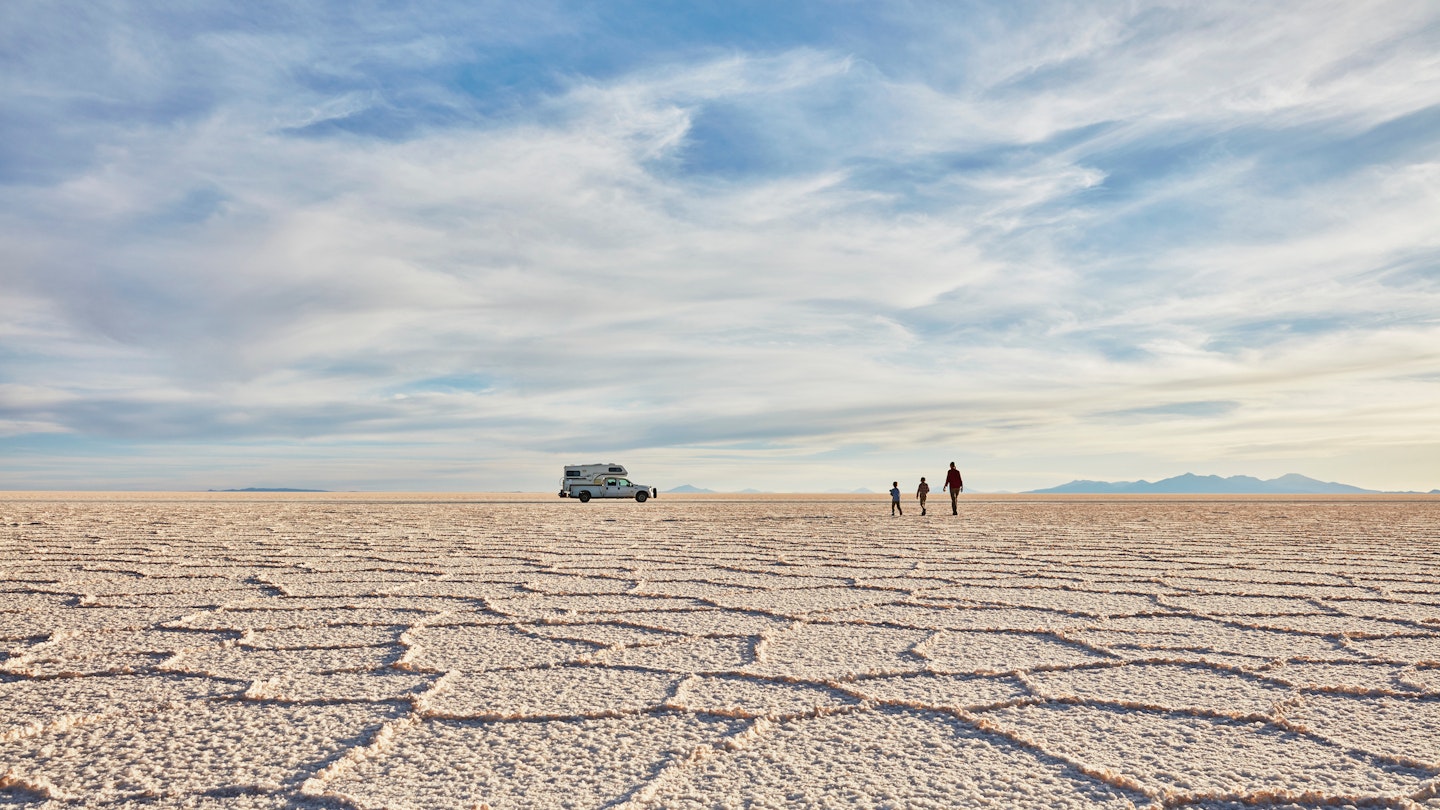
Experience the best of Bolivia as a family with this guide to traveling there with kids © Stephen Lux / Getty Images
From taking a bath in thermal rivers to a fascinating ride on a cable car, Bolivia has plenty of safe and fun attractions for all ages.
Discover breathtaking sceneries and enjoy natural experiences on a family trip where no one is going to get bored. Here's everything you need to know about traveling in Bolivia with kids.
Is Bolivia good for kids?
Bolivia is an off-the-beaten-track country, which means tourist attractions are uncrowded making them ideal for moving around with a larger group.
Formula, baby food and nappies are easy to find in the cities, and most of the hotels have family rooms or can add beds/cradles to the room.
Public facilities are generally limited, but you should find diaper changing stations in airports, some bus stations, and mid- to high-end restaurants.
Squares and public parks are generally accessible in all cities, but most of the streets are not walkable with a stroller. Bring one resistant enough to go cope with potholes and uneven paving, or consider using a baby carrier instead.
Public buses are uncomfortable and usually full, airports and bus stations don’t have a play area, and in small towns, formula and baby food are hard to find. Wherever you go, though, people are kid-friendly and will be willing to help if needed.
Ready to start planning your family trip? Here's our guide to the best time to visit
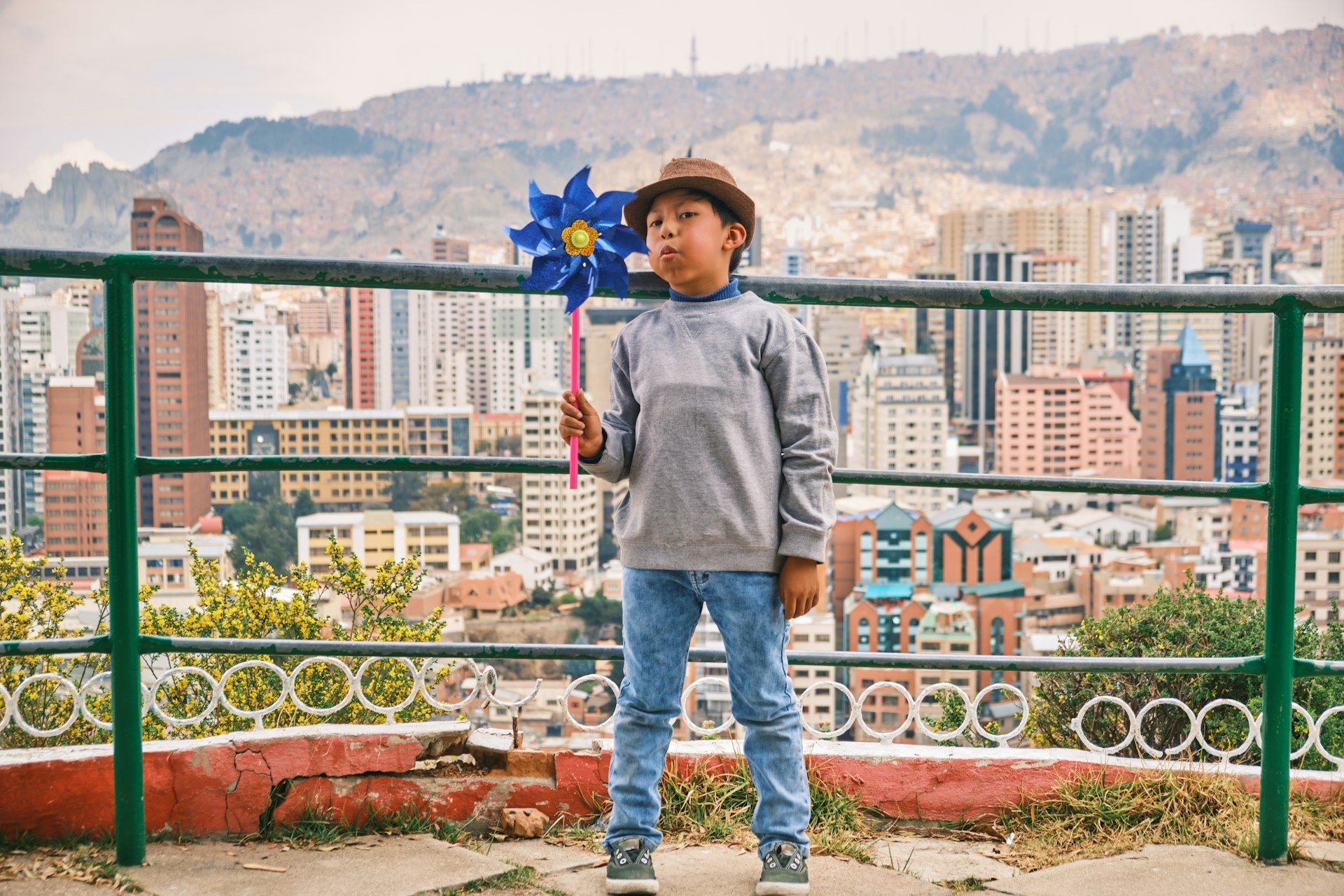
Where is best in Bolivia for kids?
Bolivia is full of wonderful natural sites that kids will enjoy. For all ages, Aguas Calientes hot springs in the east of Santa Cruz are a top attraction, and Uyuni Salt Flats can be an incredible and memorable experience for kids, especially in the rainy season , when the sky is reflected in the water.
Best things to do in Bolivia with babies and toddlers
Soak in the hot springs in chiquitania.
Aguas Calientes is a small town located 436km (270 miles) east of Santa Cruz . This wonderful spot has a thermal water river that is less than 75cm (2.5ft) deep with a temperature around 38ºC (100ºF).
Toddlers can safely explore tropical nature here while keeping an eye out for little fish. There are hotels with family facilities, such as high chairs, large rooms, and a small play area, and it's best to visit on weekdays when it's less crowded.
Relax in Bolivia's urban parks
Bolivia has several large parks that will keep the kids busy. Spend the day at the playground, take a nap under the shade of a tree or enjoy a family picnic.
Parque Los Mangales in Santa Cruz is one of the most-visited by families and Parque de la Familia in Cochabamba is popular at night with its light shows and dancing waters.
Visit a farm and feed animals
There are few things that little children love more than animals and Bolivia has a couple of farms that welcome families. Ranchito Feliz , a 15-minute drive away from the main plaza in Tarija , will give your kids a marvelous hands-on experience feeding chickens, sheep, rabbits and horses.
Entry costs US$1 should be booked at least one day before.
We can help you choose where to go in Bolivia with our guide to the top places to visit
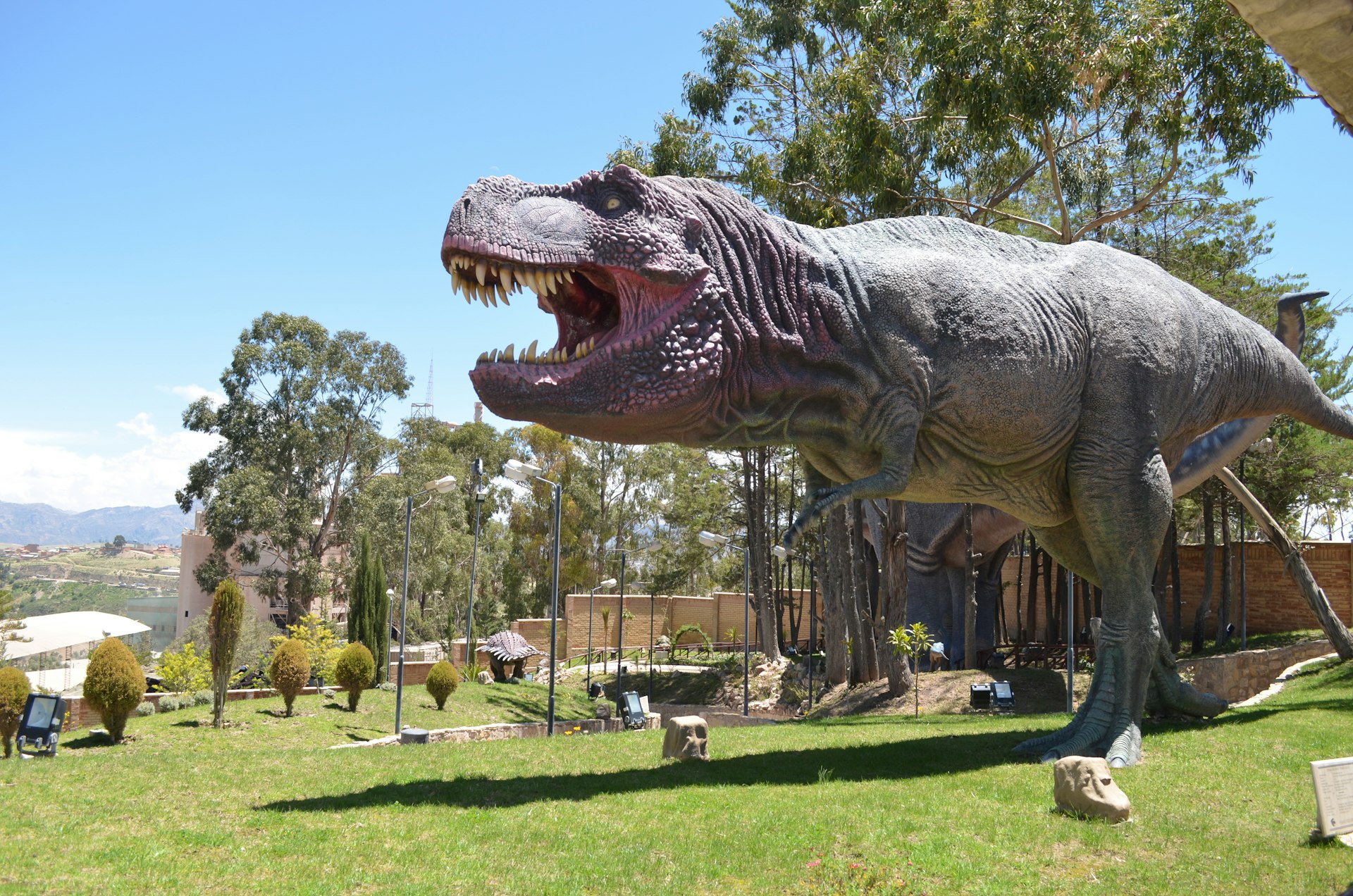
Best things to do in Bolivia with kids
See life-size dinos at sucre's parque cretácico.
Parque Cretácico holds one of the world’s largest collections of fossilized dinosaur footprints and has life-size models of huge dinosaurs that will amaze. Located 5km (3 miles) away from Sucre , hop on the shuttle bus service that runs from the main square every hour.
Explore space at Tarija's observatory
Tarija's Observatorio Astronómico Nacional – the country’s first observatory – is an incredible place where kids get a hands-on learning experience about space exploration and the galaxy.
There’s a large telescope children can peek thorough and a fantastic planetarium. It’s best to call ahead before heading out.
Spend the day in nature at Biocentro Guembé near Santa Cruz
Spend an amazing day in nature at Biocentro Güembé without making a long trip. Approximately a 15-minute drive from the business zone of Santa Cruz, it includes a butterfly sanctuary, an aviary, lagoons and a swamp.
Take a tour with a biologist or roam the grounds at your own pace. End the day at any of the 13 pools on the property or opt for a meal with fresh produce from the surrounding gardens.
Ride the cable car in La Paz
Riding the world’s longest urban cable car network is a popular attraction for children during a visit to La Paz . The thrilling views of the city and the snow-capped mountains in the distance won’t be forgotten.
Some stations have attractions nearby like Mother Earth Park, in Central Station of the Red Line, which has dancing waters and playgrounds, that will allow kids to run around before getting back into the cabin.
Getting around in Bolivia can be a challenge. Here are our top transportation tips
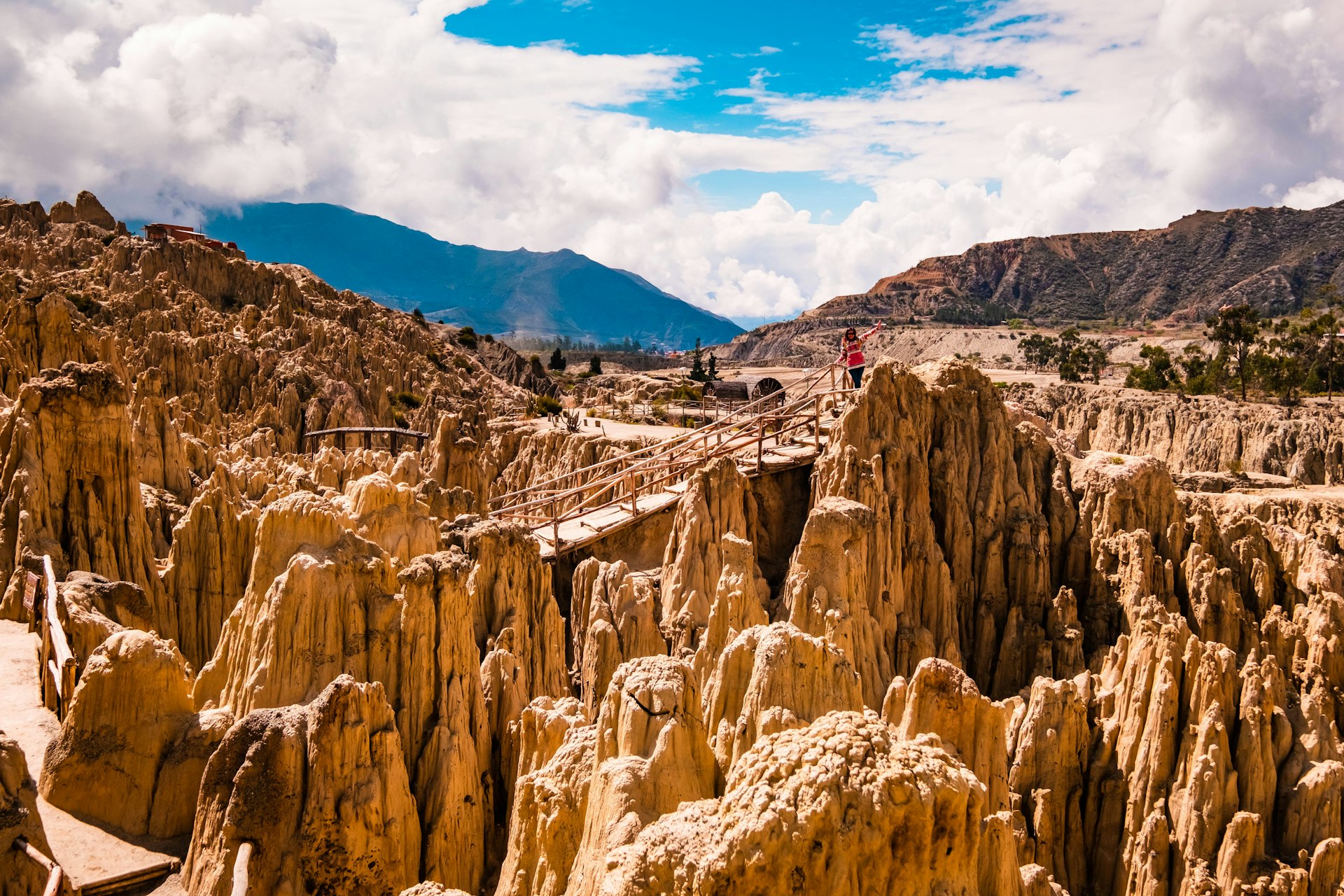
Best things to do in Bolivia with tweens and teenagers
Snap some photos on the uyuni salt flats.
Visit the famous Uyuni Salt Flats in the rainy season (December to February) to see the stunning sunset or the night sky reflecting into the water.
Social-media crazed teenagers can spend hours taking Instagrammable photos and vidoes for all their friends.
Local tip: If you have time, it’s a good idea to wait a few days to get acclimatized to the altitude before heading to Bolivia’s top tourist attraction .
Take a walk in Moon Valley near La Paz
Once in the city of La Paz, Valle de la Luna is a must-see attraction. This surreal geological formation similar to the craters of the moon can be explored in two trekking circuits, taking from 15 to 45 minutes, for amazing views.
Located 10km (6 miles) from the center of La Paz, visit with a tour operator or by taking a taxi or bus.
Stay in the tropical wilderness of Amboró National Park
A stay at the Refugio de Los Volcanes , in Amboró National Park, is a fascinating experience for wilderness seekers.
This lodge is in the tropical forest, 68km (42 miles) from the city of Santa Cruz. It has several hiking trails at different levels of difficulty, as well as waterfalls and natural pools.

Go on a journey into the jungle
One on the bucket lists for more adventurous tweens and teens is getting into the heart of the Amazon to admire the exotic species found there.
Departing from the town of Rurrenabaque, you can take a three-day wildlife safari by canoe, where you might spot several species of birds, monkeys, capybaras, snakes, caimans and pink dolphins. Prices vary but expect to pay around US$150 per person per night, including accommodation, food and transportation.
Planning tips
If traveling with children and only one of the parents in Bolivia, you need to carry a permit issued by an Ombudsman’s Office – you'll find at least one in every city, normally located in bus stations – where you have to present identification documents and fill out a form.
The permit is free and valid for multiple trips up to one to three months. It may not be required for all trips, but make sure you have it along with your other travel documents when traveling by plane, as you may not be authorized to board without it. A permit is not required for children traveling with both of their parents.
Explore related stories
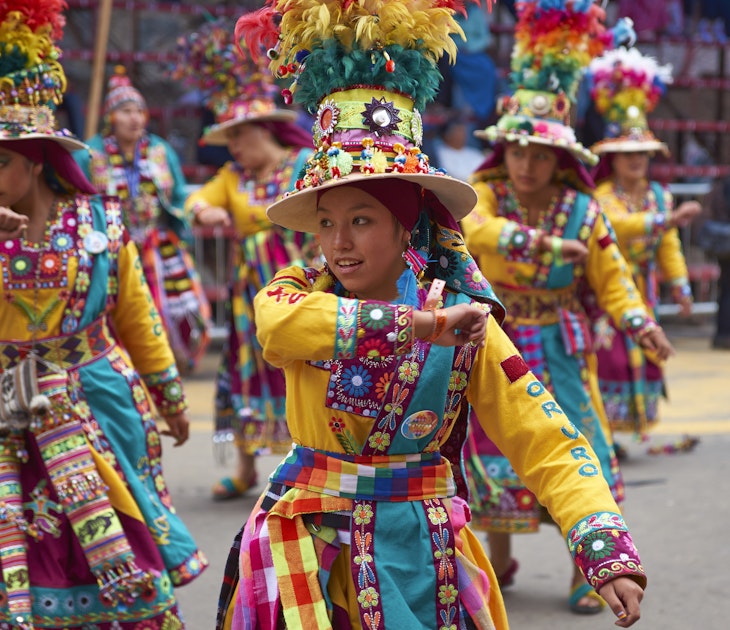
Festivals & Events
Jan 8, 2024 • 8 min read
Mardi Gras is just around the corner – and these are the best destinations to experience it.

Jan 5, 2024 • 20 min read

Dec 8, 2023 • 6 min read

Nov 6, 2023 • 8 min read
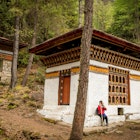
Apr 19, 2023 • 6 min read
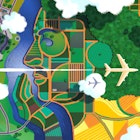
May 27, 2022 • 7 min read
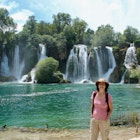
Mar 14, 2022 • 16 min read
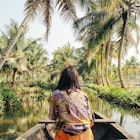
Jan 25, 2022 • 6 min read
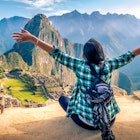
Dec 10, 2021 • 10 min read
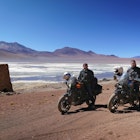
Oct 9, 2020 • 7 min read
- Mobile Apps
- Stream on discovery+
- Program Guide
- Ghost Adventures
- Ghost Hunters
- Ghost Brothers
- Conjuring Kesha
- The Dead Files
- Destination Fear
- Eli Roth Presents: A Ghost Ruined My Life
- Expedition Bigfoot
- Ghost Nation
- The Holzer Files
- Kindred Spirits
- Mountain Monsters
- Paranormal Caught on Camera
- Portals to Hell
- Amy Bruni and Adam Berry
- Destination Fear Team
- Don Wildman
- Ghost Adventures Crew
- The Holzer Files Team
- Jack Osbourne and Katrina Weidman
- Steve Dischiavi
- Watch Live TV
- Tips for Solo Travelers
- 4 Gorgeous Waterfalls
- 5 Extreme Swings
- World's 10 Best Swimming Holes
- Best BBQ in America
- Tilt! at 360 Chicago
Digital Exclusives
- Big City, Little Budget: New York
- Big City, Little Budget: San Francisco
- Bizarre Foods in the Kitchen
- One Bag and You're Out
From Our Shows
Bizarre Foods
- Bizarre Foods: Delicious Destinations
- Booze Traveler
- Expedition Unknown
- Hotel Impossible
- Mysteries at the Museum
Top Domestic
- New Orleans
- New York City
- Washington, DC
Top International
- Myrtle Beach
- Niagara Falls
- San Antonio
Explore By Region
- Asia Pacific
- Middle East & Africa
- North America
- South & Central America
Top Interests
- Amusement Parks
- Arts and Culture
- Food and Wine
- National Parks
- Health and Wellness
- Long Weekends
- Outdoor Adventure
By Traveler
- Family Travel
- Girls' Getaways
- LGBT Travel
- Solo Travel
Travel Tips
- Budget Tips
- Gear and Gadgets
- Hotels and Lodging
- Plan Your Bucket List
- Savvy Traveler
- Travel's Best
We're sorry, there seems to be an issue playing this video. Please refresh the page or try again in a moment. If you continue to have issues, please contact us here .

Finding Flavorful Roots
Andrew Zimmern eats his way through history on Bizarre Foods, Tuesdays at 9/8c.
Andrew's 'Bizarre' Recipes

Stews, Steaks and More
Get the skinny on Andrew Zimmern's custom recipes inspired by his American travels seen on Bizarre Foods .
Bizarre Foods in Pictures
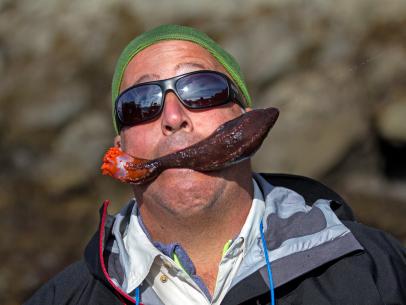
10 Most Bizarre Foods in the World 10 Photos

10 Most Bizarre Foods in the World 12 Photos

Bizarre Foods: San Antonio Pictures 16 Photos
Get andrew's travel tips and food favorites.

Andrew's Top 5 for Pittsburgh 04:13
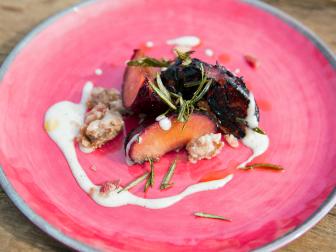
50 States, 50 Plates 51 Photos
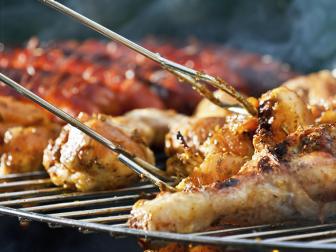
Andrew Zimmern's 10 Favorite State Fair Foods 10 Photos
New web series: southern road trip with the potash twins.

Beware the Lizard Man 03:22

East Meets West Comfort Food 03:41

Moonshine and Sweet Tea 03:48
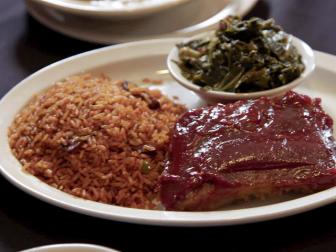
The True Soul of Charleston 04:06

Charles Towne Living 03:41

What the Wazoogle? 03:15
About the show.
Andrew Zimmern is dusting off his passport to crisscross the globe in search of the world's most bizarre foods.
About the Host

Andrew Zimmern
More andrew zimmern on travel channel.

Bizarre Foods Delicious Destinations

Andrew Zimmern's Bucket List

Andrew Zimmern's Driven by Food
What's new from trvl.

Jack Osbourne's Most Shocking Adventures 9 Photos
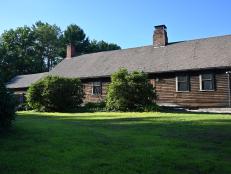
The Spirits in the Conjuring House Were Quick to Show Themselves Apr 7, 2023
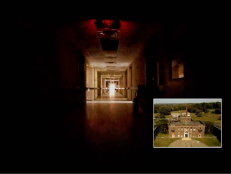
Haunted History: A Shuttered Pennsylvania Nursing Home Is Home to Dozens of Trapped Souls Mar 30, 2023

Cult Leader Charles Manson Controlled People from Behind Bars Mar 24, 2023
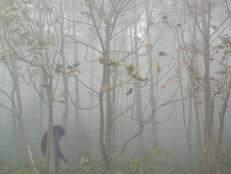
7 Best Pieces of Evidence Recovered By the Expedition Bigfoot Team Mar 14, 2023
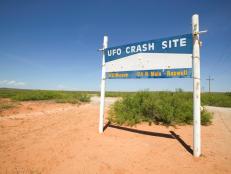
6 Things Witnesses Said About the Roswell Incident Mar 10, 2023

Creepy Urban Legends From Each State Nov 16, 2022

Unraveling The Mysterious Death of Marilyn Monroe Feb 24, 2023

Top 5 States For UFO Sightings Feb 8, 2023
Creepy urban legends from each state 50 photos.

A Massachusetts Family Fled Their Home After Chilling Door-Camera Footage Nov 22, 2022
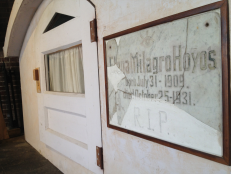
6 Museums That Are Home To Creepy And Mysterious Artifacts Oct 31, 2022
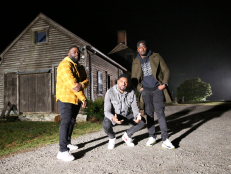
Settle In For A Boo Binge With The New Season Of 'Ghost Brothers: Lights Out' Oct 11, 2022

Ghost Brothers: Lights Out Returns for Season 2 on discovery+! Sep 22, 2022
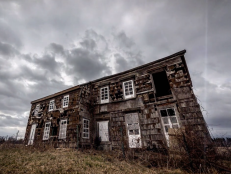
Fact Or Fiction? Modern Vampire Lore May Be A Planned Misinformation Campaign Aug 22, 2022

Lindbergh Baby Kidnapping: Was The Famous Pilot Responsible For His Missing Son? Aug 22, 2022

Top 6 States With The Most Alien Encounters Aug 22, 2022
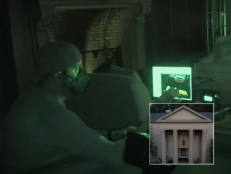
5 Unforgettable Spirits From Ghost Adventures Season 25 Sep 14, 2022

5 Craziest Moments From Fright Club Season 2 Sep 1, 2022

Four Terrifying Moments From 'Ghosts Of Devil's Perch' Aug 31, 2022
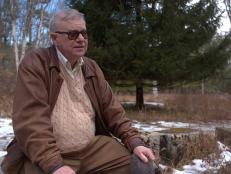
Shock Docs: The Visitors Reveals the Horrors of Alien Abduction from Best-Selling Author Whitley Strieber in Terrifying New Doc Sep 3, 2022

7 Of Russell Acord’s Most Heart-Pounding Moments On 'Expedition Bigfoot' Aug 12, 2022
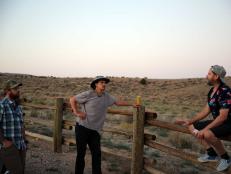
Jack Osbourne Teams up with Jason Mewes and Jamie Kennedy in the New discovery+ Special, Jack Osbourne's Night of Terror: UFOs Aug 2, 2022

Who Are The Odd Fellows? Jul 29, 2022

Boy Records Selfie With Grandma’s Ghost Jul 27, 2022

The Haunted History of San Francisco’s Westerfeld House Jul 19, 2022

An Elite Team of Paranormal Investigators Race to Help a Petrified Western Town in the New Series Ghosts of Devil's Perch Jul 19, 2022
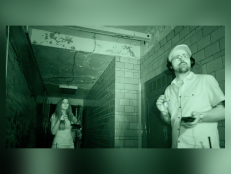
13 Terrifying Pieces of Evidence from Ghost Hunters: TAPS Returns Jul 14, 2022
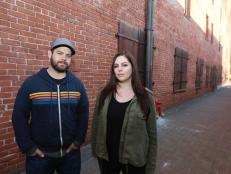
National Dive Bar Day: Is There a Portal To Hell In Memphis? Jul 7, 2022

7 Scary Homes From 'Ghost Adventures: House Calls' Season 1 Jun 30, 2022

Stream discovery+
Your favorite shows, personalities and exclusive originals. All in one place.
Follow Us Everywhere
Join the party! Don't miss Travel Channel in your favorite social media feeds.
More From Travel
- Sweepstakes
- Stream Travel Channel
- Ways to Watch Travel Channel

- Privacy Policy
- Visitor Agreement
- Online Closed Captioning
- Accessibility
- Discovery, Inc.
- Do Not Sell or Share My Personal Information
- Food Network
- Travel Channel
- Cooking Channel
- Discovery.com
- © 2024 Warner Bros. Discovery, Inc. or its subsidiaries and affiliates. All rights reserved.

IMAGES
VIDEO
COMMENTS
BOLIVIA TRAVEL CHANNEL el primer canal de televisión de turismo 24 horas por suscripción y una Revista Digital especializado en Turismo en dos idiomas un portal multimedia Mostrando al viajero ...
BTC - GO, Murillo, Pando, Bolivia. 15,027 likes · 44 talking about this. Plataforma multimedia especializada en turismo, gastronomía y cultura de America Latina
Bolivia Travel Channel BTC GO, La Paz. 4,096 likes · 53,043 talking about this. Plataforma multimedia especializada en turismo, gastronomía y cultura de Bolivia y América Latina
Share your videos with friends, family, and the world
Salar de Uyuni. Bolivia. The world's largest salt flat sits at a lofty 3653m (11,985ft) and blankets an amazing 12,000 sq km (4633 sq miles). It was part of a prehistoric salt….
Bolivia is a welcoming country, but it's worth having a basic understanding of the local etiquette before you travel. Learn some basic greetings. To an extent, Bolivian society is still quite formal. It's normal to greet someone with a polite buenos días (good morning), buenos tardes (good afternoon) or buenos noches (good night).
3. Visit Lake Titicaca, the birthplace of the sun. Any trip to Bolivia is incomplete without a visit to sacred Lake Titicaca. The highest navigable lake in the world at 3812m (12,506ft), Titicaca's waves kiss picturesque farming villages and envelop legends of ancient civilizations lost in the water's depths.
Bolivia. Andrew samples the culinary delights of Bolivia, including fish carpaccio, bull penis soup and mochochinchi (aka booger juice). He participates in a llama fetus burning ceremony and watches women flex their muscles in a wrestling match. See Tune-In Times.
What To Expect. Language: Bolivia has one of the highest numbers of official languages in the world with 39 recognized by the Bolivian constitution.The most widely spoken is Spanish, as well as indigenous languages like Aymara and Quechua. Currency: The currency in Bolivia is the Bolivian Boliviano.. Credit Cards and ATMs: Most major restaurants and hotels will accept credit cards in Bolivia ...
Bolivia's cities have tons to offer travelers. Santa Cruz, located in southern central Bolivia, is considered the country's commercial center and has tons of great museums, galleries, and cultural institutions to visit — as well as a vibrant nightlife scene. In La Paz, you can browse the colorful markets and learn more about the ...
Discover more places in Bolivia. Lago Titicaca, the cordilleras and the Yungas Travel Guide. La Paz Travel Guide. Santa Cruz and the Eastern Lowlands Travel Guide. Sucre, Cochabamba and the central valleys Travel Guide. The Amazon Travel Guide. The southern Altiplano Travel Guide. Fact file.
Outdoors and Adventure Travel's Best. View The Gallery. 1 / 9. In Bolivia, you'll find the southern hemisphere's highest and most rugged terrain.
Otherworldly landscapes and diverse natural beauty make Bolivia a must-see spot in South America for the adventurous traveler. Related To: Outdoors and Adventure Travel's Best
After pushing our way through altitude sickness when we first arrived in La Paz, we finally made it out of our apartment and into the bustling administrative...
Bolivia Travel Channel - "Vive La Aventura", Bolivia. 4,939 likes. TV channel
Bolivia Travel Guide. Photograph by ALEX SABERI, Nat Geo Image Collection.
Take a boat tour to the peaceful Isla del Sol (Island of the Sun) and explore ancient Inca ruins or spend the night in a traditional homestay with local families on the islands. 4. Sucre: Known as Bolivia's constitutional capital, Sucre is a city of colonial charm and architectural beauty.
Nothing could have prepared me to travel Bolivia. One of the most beautiful, challenging and memorable adventures of my life. From La Paz to the Uyuni Salt F...
BOLIVIA TRAVEL CHANNEL (www.btc.tv.bo) promoviendo la protección medioambiental, la protección de la fauna y flora, la cultura de nuestros pueblos, el...
Bolivia has several large parks that will keep the kids busy. Spend the day at the playground, take a nap under the shade of a tree or enjoy a family picnic. Parque Los Mangales in Santa Cruz is one of the most-visited by families and Parque de la Familia in Cochabamba is popular at night with its light shows and dancing waters.
Bolivia. Todd Carmichael begins his Bolivian journey short of breath at 12,000 feet in the world's highest capital, La Paz. The Andes Mountains have every ingredient necessary to produce incredible coffee, but coffee plants are hard to find because of a much more profitable cash crop, coca -- the plant used to make cocaine. See Tune-In Times.
GET COPYRIGHT FREE MUSIC HERE: https://share.epidemicsound.com/JumpingPlaces GET 83% DISCOUNT OFF PLUS 3 MONTHS FOR FREE ON OUR RECOMMENDED VPN PROVIDER S...
BTC GO Bolivia Travel Channel, Santa Cruz de la Sierra. 1,243 likes · 7 talking about this · 17 were here. Promoción cultura,turismo y gastronomía latinoamericana BTC GO Bolivia Travel Channel | Santa Cruz de la Sierra
Andrew Zimmern is a writer, TV personality, chef, and teacher. A New York City native, he began his formal culinary training at the age of 14, apprenticing with some of the greatest chefs in the world. As the co-creator, host and contributing producer of Bizarre Foods with Andrew Zimmern, Andrew travels the world, tasting the most unique ...